












At CCS, we understand that solar energy is a fast-growing renewable, scalable energy technology. Solar projects can transform your energy e iciency and advance sustainability goals.
The UK Research and Innovation (UKRI) installed solar photovoltaics (PV) projects worth over £3.6 million using our Heat Networks and Electricity Generation Assets agreement.

APRIL 2023
PUBLISHER: Ralph Scrivens ralph@ energymanagermagazine.co.uk
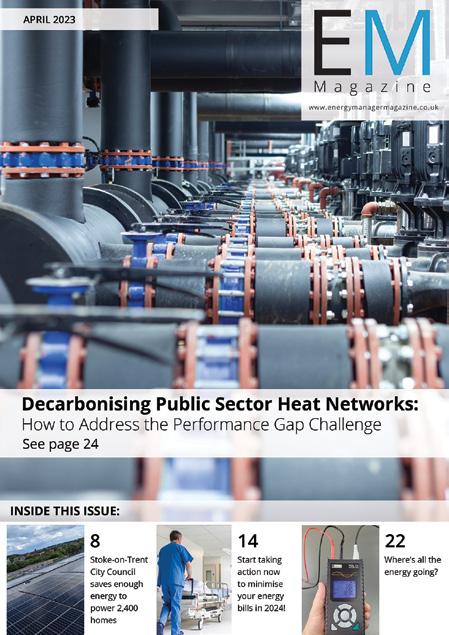
PRODUCTION: Sarah Daviner sarah@ energymanagermagazine.co.uk
ACCOUNTS: accounts@ energymanagermagazine.co.uk

PRINT: Mixam Print
ENERGY MANAGER MAGAZINE
is published 10 times a year by Energy Manager. www.energymanagermagazine.co.uk
42 Wymington Park, Rushden, Northants, NN10 9JP Tel: 01933 316931
Email: mail@ energymanagermagazine.co.uk
REGISTRATION: Qualifying readers receive Energy Manager free of charge. The annual subscription rate is £80 in the UK, £95 for mainland Europe and £115 for the rest of the world.
Single copies £10.
Some manufacturers and suppliers have made a contribution toward the cost of reproducing some photographs in Energy Manager.
PAPER USED TO PRODUCE THIS MAGAZINE IS SOURCED FROM SUSTAINABLE FORESTS.
Please Note:
No part of this publication may be reproduced by any means without prior permission from the publishers. The publishers do not accept any responsibility for, or necessarily agree with, any views expressed in articles, letters or supplied advertisements.

All contents © Energy Manager Magazine 2023
ISSN 2057-5912 (Print)
ISSN 2057-5920 (Online)
The UK government is currently missing one of its core Net Zero commitments to reduce CO2 emissions by 101 years, according to the Public Building Energy Efficiency Report.
CO2 emissions from public buildings need to be reduced five times faster than they’re currently falling to meet the target of ‘75% reduction in CO2 emissions by 2037’. The report projects that nine out of ten (91%) public buildings will need upgrading in the next seven years – if they’re to meet net zero targets.
The report, conducted by dedicated network service providers Neos Networks, examined the actual energy usage and efficiency of over 450,000 public buildings in England and Wales. It analysed their display energy certificates (DECs) and ‘operational ratings’ (annual CO2 emission kg per m2), and highlighted the areas requiring immediate action and major investment in retrofitting public building stock.
On average across England and Wales, CO2 emissions per m2 have fallen by 0.62% annually over the last 15 years. An annual reduction of 3.75% is needed to achieve the core goal of a 75% reduction in CO2 emissions by 2037, compared to the 2017 benchmark as outlined in the UK governments ‘Net Zero’ and ‘heat and buildings’ strategies.
However, there is a mixed picture across the local authorities. Public buildings in a third (32%) of local authorities have seen an increase in their CO2 emissions per m2. In some areas, operational rating emissions have risen by over 70%.
By contrast, more than two-thirds (68%) of local authorities brought emissions down. Merthyr Tydfil (-68.20%), East Hertfordshire (-54.23%) and Portsmouth (-54.35%) were the best performers, highlighting what’s possible with targeted investment.

The data highlights the need for immediate action. Almost 13% of public buildings fall below the current minimum energy efficiency standards (MEES) EPC rating of E for nondomestic buildings, based on their latest display energy certificate score.
Central government funding for local authorities fell by over 50% in real terms between 2010–11 and 2020–21, according to government committee reports. The report findings reignite calls for government investment to support local authorities improving the energy efficiency of schools, NHS facilities and other public buildings.
William Harris, Senior Account Director, Public Sector at Neos Networks: “These findings highlight the size of the task ahead if authorities are to meet targets. It’s clear that greater support from central government is needed – and investment in network connectivity across public buildings is a crucial first step.”
“This will enable more effective data collection and analysis – to make informed decisions about the public building stock in each area. Then there can be a targeted approach, guided by specialists, to investing in CO2 emission reduction measures where the need is greatest.”
Daniel Scott, Vice President, Danfoss Climate Solutions, Northern Europe Region, Danfoss, said: “Around 40% of the energy consumed in cities can be attributed to buildings and one of the most
effective steps that can be taken to reduce the CO2 emissions from public buildings is to make their energy systems more effective. Heating and cooling are the biggest energy consumers in public buildings and more efforts need to be made to prioritise solutions that use less energy overall.”

“Excess heat is the world’s largest untapped source of energy and yet there are very few efforts to reuse it. Many public buildings are located close to other sources of heat, such as data centres, supermarkets or Underground stations. There is tremendous potential for capturing this excess heat and reusing it to heat local public buildings. In the Greater London area alone, we have identified 648 eligible excess heat sources that could potentially share their heat through a district energy system. All of this is possible with technology that is readily available today. We urgently need to accelerate the progress of energy efficiency in public buildings. After all, the greenest energy is the energy we don’t use.”
Read the report here: https:// neosnetworks.com/resources/ blog/the-public-building-energyefficiency-report-where-canimprovements-be-made-to-meetnet-zero-decarbonisation-targets/

Analysis of public building energy usage finds government risks missing its 75% CO2 emission reduction target – by 101 years.









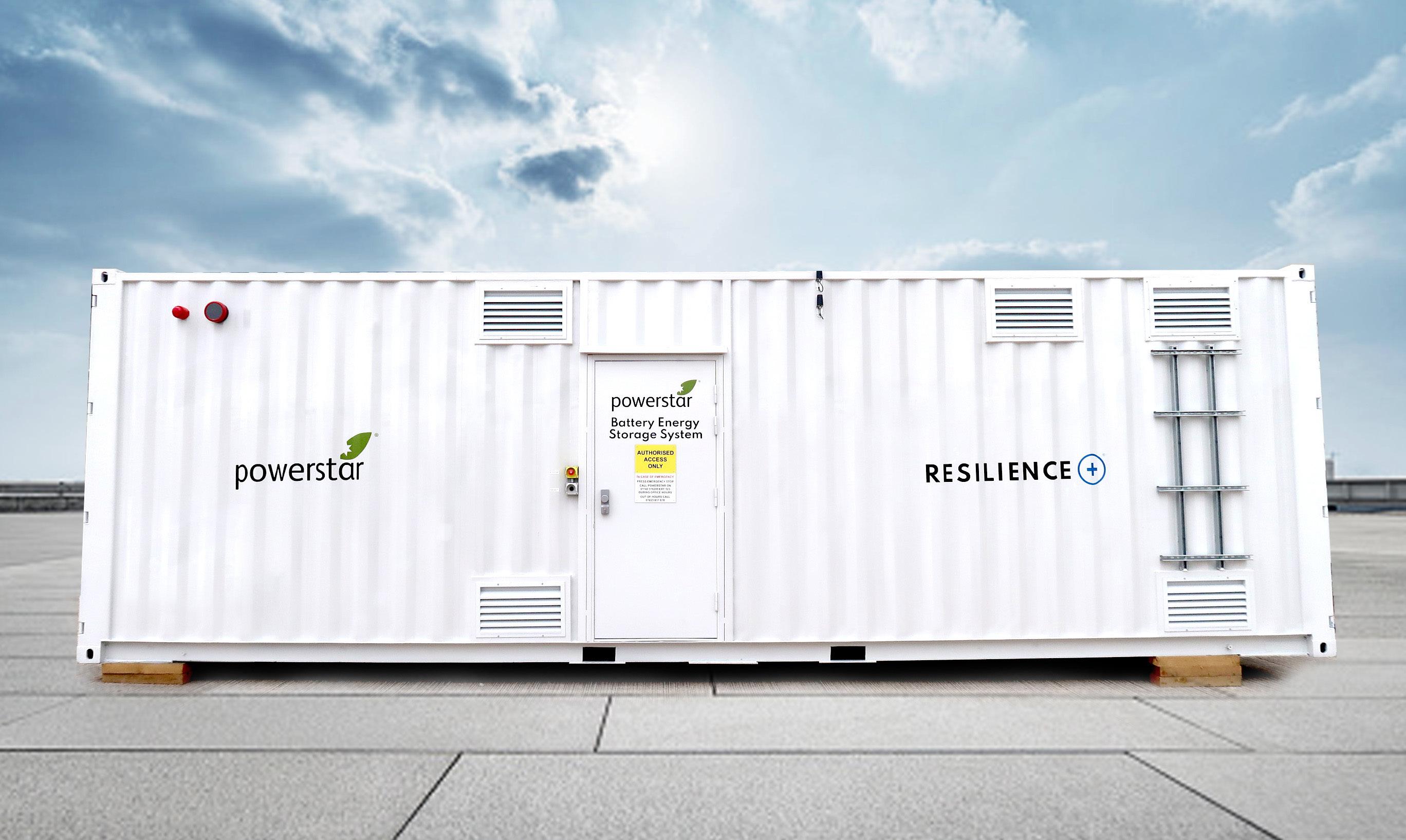


Commenting on the Commission’s proposal for a ‘’Net-Zero Industry Act , Baptiste Buet, Director of the EU Business Unit at EIT InnoEnergy, said:
“We sit at heart of the key technologies that the act will seek to support. EIT InnoEnergy invests early and brings start-ups to industrial scale, faster and de-risked. Our mission is to accelerate the energy transition through innovation, with European made technologies.
“The Net-Zero Industry Act confirms that our strategy and our model are aligned with the EU goals, as demonstrated through our leadership of the European Battery Alliance and of the European Solar PV Industry Alliance.”
“The Net-Zero Industry Act promises to deliver a regulatory framework for the scale-up of key climate technologies across Europe. EIT InnoEnergy welcomes this ambition to streamline and accelerate strategic industrial value chains across the continent.”
“This tailor-made support will galvanise strategic climate technology sectors and provide the assurance investors and start-ups need to double-down in a market they know will support them to flourish.”
“With the proposed Net-Zero Industry Act, the EU has an opportunity to set a global standard for a business environment conducive to investments in climate technologies. The proposals by the European Commission are a big step forward but speed and simplicity will be the benchmark of successful implementation. Time is of
the essence in the global competition for climate technologies.”
“At EIT InnoEnergy, we believe that the EU must put sustainability at the heart of its industrial strategy for climate technologies. Europe’s competitiveness will be based not only on price, but on the sustainability, circularity and traceability of any climate technology value chain or product. This will retain and attract the right players and investors to Europe. For this, we should consider rewarding best performance in sustainability with incentives.”
Commenting on how the EU Green Deal Industrial Plan aims to accelerate access to funding, Baptiste Buet, Director of the EU Business Unit at EIT InnoEnergy of EIT InnoEnergy, said:

“The big economies across the world have ramped up significantly their financial incentive schemes for climate technology manufacturing. We welcome the EU initiative to upgrade the EU attractiveness for investments. Being able to catalyse private investments with public finance is one of the many dimensions for Europe to be successful in that global race.”
“That is why EIT InnoEnergy welcomes the decision to redirect existing EU funds to finance industrial scaling up of climate technologies. It is consistent with the purpose to accelerate a green economic recovery.”
“Our current equity portfolio of over 180 companies have an aggregated need
of EUR160bn of extra financing until 2030 to meet their industrial objectives – a tremendous technology and industrial leadership opportunity for Europe that will deliver growth and jobs.”
Commenting on the Commission’s proposal for a ‘Critical Raw Materials Act’, Baptiste Buet, Director of the EU Business Unit at EIT InnoEnergy, said:
“A value chain is only as strong as its weakest link. For batteries, access to raw, processed, and recycled materials is that weak link. Therefore, we welcome the proposal of the European Commission to prioritise strategic materials, set targets for extraction, processing and recycling capacities in Europe and make project development easier and faster.”
“We welcome the ambition to identify strategic projects, streamline and accelerate permit granting processes in the Member States while keeping the highest level of sustainability. Companies in EIT InnoEnergy’s portfolio, such as Vulcan Zero Carbon Lithium or EuroManganese, are ready to start and contribute to the EU’s resilience in such strategic materials. There is no time to lose to pool efforts around them to accelerate their operations.” www.innoenergy.com
Hamworthy Heating has introduced its new Dorchester DR-SG range of stainless steel condensing water heaters with enhanced durability and large continuous outputs.

The Dorchester DR-SG is available in ten power outputs over three storage capacities and features a durable stainlesssteel tank, heat exchanger and coil for enhanced performance, efficiency, and increased service life.
Suitable for both renovation and new build
projects, including locations with substantial and continuous hot water demands such as hotels and sports facilities, the Dorchester DR-SG meets all of the latest Building Regulations and offers significantly improved efficiency and performance when replacing a non-condensing water heater.
Featuring a robust design, the Dorchester DR-SG is designed to offer outstanding performance under challenging water conditions and cope with the extremities of soft and hard water.
Incorporating a user-friendly design, Dorchester DR-SG water heaters are operated via the popular Siemens LMS mini controls platform. Featuring an intuitive digital control panel with a clear backlit LCD and a scroll wheel
to navigate between different setting screens, LEDs are also incorporated into the user interface to enable quick and easy identification of any potential faults.
Suitable for retrofit into a vast number of installations due to being approved for multiple flue system types, all Dorchester DR-SG models are convertible to run on LPG.
Building on the success of its popular water heater range, the Dorchester DR-SG is supplied with a five-year warranty on the tank and a two-year warranty on the components. For full details of warranty terms and conditions or to discuss the range of tailored packages available, details are available from Hamworthy Heating on request. www.hamworthy-heating.com
Steam – this extraordinary, energy dense, fluid which is irreplaceable in all kinds of industries to heat, power and sterilize – leaving nothing but water behind. And with advancing steam generation solutions, steam is part of our sustainable future. This is Natural Technology.


You see steam. We see...
The Council has made the energy savings since May last year, when it completed a three-year improvement programme to upgrade its estate.
It worked closely with decarbonisation partner Siemens to audit Council buildings, including offices and sports centres. Siemens then deployed a mix of technologies to minimise energy use and to generate its own lower carbon electricity.
The project formed part of Stokeon-Trent City Council’s response to rising energy prices as well as climate change and its effort to reach national net-zero targets by 2050.

Low-energy LED lighting, which was part funded by Siemens Financial Services, was installed across sites, while air source heat pumps were deployed at the buildings that won’t be immediately connected to the council’s upcoming District Heat Network project. Alongside this, a smart building management system was installed to provide accurate monitoring of the buildings’ energy use.
The seven million kWh saved is on top of the council directly generating 2.3 million kWh of electricity with the help of solar panels fitted to Dimensions


Leisure Centre, New Horizons Sports and Leisure Centre, and Fenton Manor Sports Complex. Combined Heat and Power (CHP) installations are also now online across the estate to produce lower cost electricity as well as recycle waste heat to reduce natural gas usage and further improve efficiency.
The replacement of natural gas heating systems has also enabled the Council to save 1,506 tonnes of CO2, which is equivalent to taking 886 cars off the road for a year.
Councillor Carl Edwards, Stoke-onTrent City Council cabinet member for housing and the environment, said: “Our energy savings represent a great leap forward in our decarbonisation, and forms a crucial part of our ongoing commitment to decarbonisation.
“Siemens’ support has been invaluable in setting up our future as a sustainable, responsible organisation that leads
by example in local government, and in the communities we operate in.”
Faye Bowser, head of energy performance services at Siemens UK and Ireland, said: “Energy prices have become more volatile at a time when local authority budgets have tightened. But pioneering projects like this show how local authorities can significantly cut their energy use, which will save money for reinvesting in their communities, while making good progress towards addressing the climate emergency.
“The technology is readily available to help major public sector organisations like Stoke-on-Trent City Council to make huge gains on the road to net-zero. We’re proud to provide both the strategic support and the necessary technology that’s made a major difference to the council.”
For more information, visit: https:// new.siemens.com/global/en/company/ topic-areas/smart-infrastructure.html

Stoke-on-Trent City Council has saved seven million kWh of energy, the equivalent needed to provide the electricity demands of 2,400 homes for a year, since completing a major project to decarbonise 11 key public buildings in partnership with Siemens.
Anew report has revealed that two thirds (67%) of large businesses believe that the Energy Bills Discount Scheme (EBDS), the new government scheme designed to help organisations with their energy costs, won’t protect them from the volatile wholesale energy market over the next 12 months.

This was one of the key findings from the 2023 Business Energy Tracker, an annual report conducted among 100 large energy users by npower Business Solutions (nBS), which monitors the impact of the energy market and policy decisions on businesses’ attitudes to energy, risk and investment planning.
For most businesses – those that aren’t classified as an Energy and Trade Intensive Industry (ETII) – the EBDS will result in a much lower level of support compared to the current scheme, the Energy Bill Relief Scheme (EBRS). Nearly one in five (19%) believe that the government should keep the EBRS until March 2024, despite the cost to the economy in doing so.
That said, while over half (52%) of respondents believed that continued financial support for businesses should be a top priority for the government, nearly three quarters (75%) recognised that a longer-term strategy is needed, calling for more incentives to help them reduce overall energy demand.
Anthony Ainsworth, Chief Operating Officer at nBS, comments:

“This year’s report reveals that energy is the top concern for UK businesses for the second year running, with 64% saying it will be the biggest risk they will face over the next 12 months, and three quarters (72%) anticipating that the cost of energy to their business will keep rising.
“Energy is also now a bigger boardlevel concern than in 2022, with 91% saying the c-suite was either very or quite concerned about energy at the moment, compared to 80% a year ago.
“This shows that the uncertainty
over the past 12 months has naturally had an impact on business confidence, which is why they need policy clarity and consistency to help them plan ahead.
“For example, since our last Business Energy Tracker in 2022, we have had three Prime Ministers, four Chancellors of the Exchequers and three Secretary of States for Business, Energy and Industrial Strategy. We also now have a new governmental department - the Department for Energy Security and Net Zero (DESNZ).
“The results from this year’s research show why DESNZ has to double down on supporting businesses through energy efficiency strategies and more incentives to reduce demand.
“While additional immediate financial support would obviously be welcome, businesses want to start planning for the longer-term as well.”
With energy continuing to be ranked as the biggest concern facing business in 2023, the Business Energy Tracker also revealed that many organisations are already being proactive in managing risk.
Sustainability measures are now the top choice for business investment this year, up from second place in 2022. Almost two thirds (60%) of respondents said it would be their number one priority in 2023, recognising that, as well as helping them reach their net zero targets, a key benefit is greater long-term operational resiliency.
The results also showed that 44% of businesses believe that the energy crisis would help net zero progress, which is up from 36% in 2022. A similar number – 41% – still felt it would harm progress, although this was down from 49% last year.
However, despite this optimism, concerns around the cost of funding and delivering the transition remain high, with 95% saying they are very or
a little concerned about the potential economic impact on their business.
Anthony
Ainsworth,continues:
“We know that businesses will play a crucial role in the net zero transition. As in 2022, this research shows that despite such a challenging year, businesses still back net zero, and they recognise the environmental, commercial and reputational benefits it can bring.
“This is why it is so important that the views of businesses are taken into account when policy is shaped. If businesses are supported to increase energy efficiency and reduce demand, it will benefit the whole of the UK.”
For more information, and to download a copy of the report visit https://npowerbusinesssolutions. com/businessconfidence
As in 2022, this research shows that despite such a challenging year, businesses still back net zero.
“ “
Reaching net zero carbon emissions by 2050 is an important goal that scientific modelling shows will only be reached with the help of advanced nuclear reactors.
The UK has an impressive nuclear heritage, with the world’s first fullscale power station in 1956 and now over 60,000 world-class nuclear professionals helping generate 6.5 gigawatts of clean energy every year. Nuclear energy provides 15% of the UK’s energy needs from only a handful of power plants.
There is good reason to be optimistic about the future of nuclear in the UK. Even though all but one of the UK’s existing nuclear power plants are slated to retire by 2030, several more are in the process of being built. The UK Government has set an ambition to quadruple nuclear power generating capacity from 6.5 to 24 gigawatts by 2050, equating to around 25% of UK electricity, with both major UK political parties agreeing on a vital role for new nuclear in achieving net zero targets.
The Government is already looking toward advanced nuclear to answer this need by announcing the deployment of a small modular reactor (SMR) by the early 2030s, and NuScale is well-positioned to help the UK achieve its goals.
At the turn of the century, Dr. José Reyes started to develop a smaller lightwater reactor at Oregon State University. NuScale Power was formed in 2007 and is now the leader of a global SMR race.
Years of research and development led by Dr. Reyes resulted in a reactor design based on conventional nuclear technology that is smaller, simpler and safer.
The NuScale Power Module™ is a 77 megawatt integral pressurized water reactor that employs gravitydriven natural circulation of the primary coolant for both normal operation and shutdown mode. NuScale’s VOYGR™ SMR power plant design can accommodate up to 12 power modules, resulting in a total output of 924 megawatts.
The near-term deployable design, which includes a fully passive safety system, has been certified by the U.S. Nuclear Regulatory Commission after being thoroughly tested and validated. Because of this, it is the first SMR to receive design approval from the U.S. Nuclear Regulatory Commission and is able to be sited where clean energy is needed all day, every day, year-round.

A NuScale VOYGRTM power plant can fit within the confines of an existing coal-fired power plant property, and can repurpose existing infrastructure, such as cooling water delivery systems, demineralised water, potable water, site fire protection, and switchyard, as well as administrative, warehouse, and other existing buildings. Additionally, being in close proximity to an existing transmission system removes the need to construct additional transmission infrastructure.

All remaining coal-fired power stations in the UK are slated to be closed by 2024. NuScale SMRs can easily be situated in these retiring stations and use existing infrastructure and energy personnel to provide costcompetitive and secure energy.
SMR technology can complement renewable energy infrastructure (e.g., wind, solar) by ensuring the delivery of constant baseload power at prices similar to other sources of reliable, zero-carbon generation.
In addition to providing clean energy baseload power, NuScale SMRs can be engaged for otherwise hard-to-decarbonise sectors, such as process heat for industrial applications, fertiliser production, water desalination, and hydrogen production.
One
NuScale technology in the UK would represent an export opportunity to the world. To reach net zero by 2050, 24 gigawatts of nuclear energy will need to be added to worldwide generation each year according to International Energy Agency modelling.
NuScale has strong financial backing from the U.S. Department of Energy, and development of NuScale power plants leveraging the UK’s supply chain can strengthen the trans-Atlantic partnership between the U.S. and the UK.
Such a trans-Atlantic trade partnership has common national objectives for SMR technology: low electricity costs; economic prosperity through jobs, intellectual property development, export opportunity, energy security, and a reduction in carbon emissions.
Levelling up means that the use of new nuclear technology deployment in the North will support significant economic growth in economically stagnant areas.
With their flexibility and smaller land footprint, SMRs can be deployed at key national energy centres, helping to level up the country.
Having regulatory approval in the U.S. means that NuScale has amassed all of the information needed to effectively undergo a similar review through the UK Generic Design Approval process, and NuScale technology
could be powering UK homes and businesses as soon as 2029.
A NuScale plant represents a century-long investment in a community, yielding 1,200 construction jobs over three years. After it is built, a 12-module NuScale plant is expected to support about 270 operation jobs and 677 indirect jobs for 60 years. This is about twice the workforce of a similarlysized coal plant and six times that of combined cycle natural gas plant.
NuScale uses many commercial grade, “off-the-shelf” items, so there’s less need for new development or fabrication, or equipment supplied under very stringent and costly nuclear standards. This also means that local suppliers can provide the majority of materials needed for construction. Up to 85% of a NuScale plant’s content can be sourced from UK supply chains.
That is why NuScale has already established strategic partnerships with potential UK customers and suppliers such as Ultra Electronics, and Sheffield Forgemasters. The supply chain required for the deployment of three NuScale power plants would create over 14,000 direct jobs.
NuScale has placed the order for the first upper reactor pressure vessel to be used at the Idaho National Laboratory site, marking the commencement of the manufacturing phase for the company’s SMR technology.

In Romania, Nuclearelectrica plans to deploy a 6-module NuScale VOYGR plant at a retired coal plant in Doicesti. With this partnership, Romania has the potential to become a catalyst for SMRs in the region.
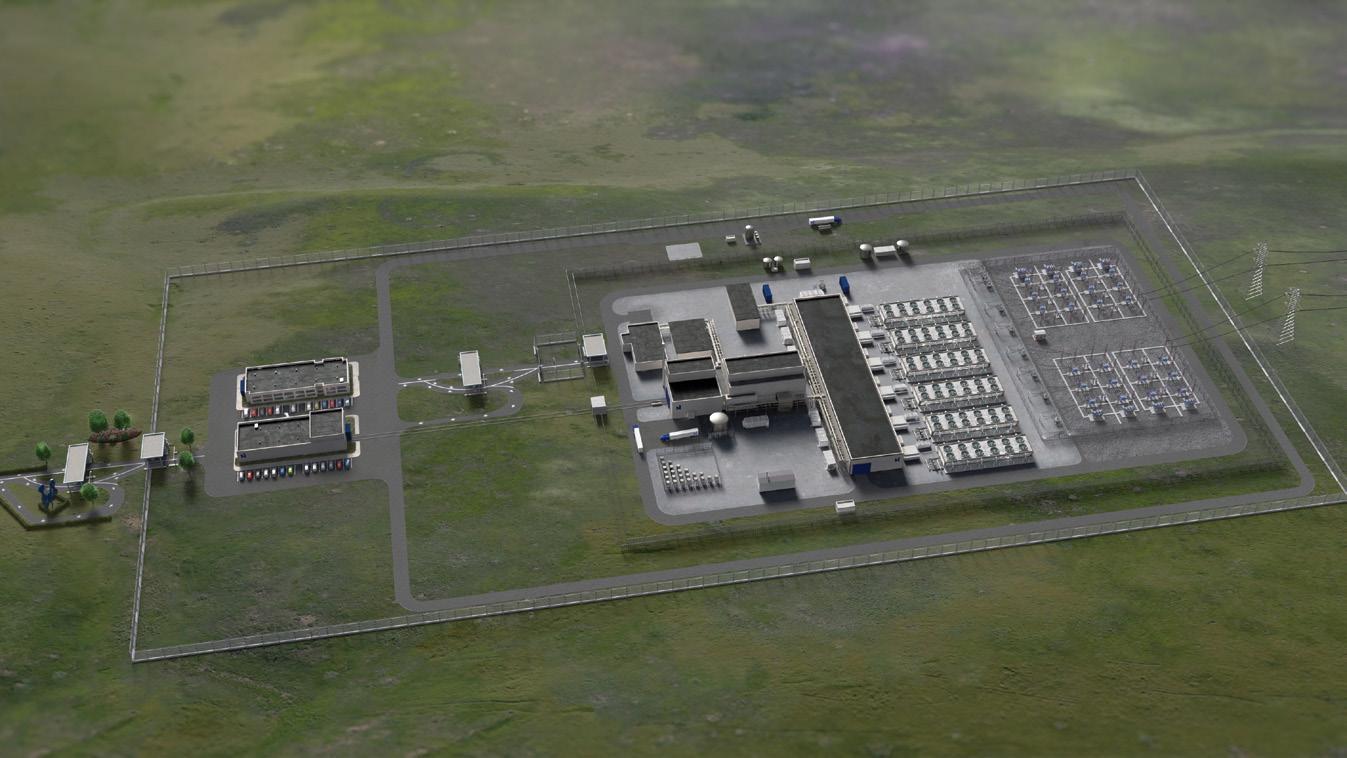
NuScale has a definitive early works agreement with KGHM, a Poland-based leader in copper and

silver production and large industrial energy user, for the first deployment of SMRs in Poland, as early as 2029. This project will demonstrate the ability for industrial providers to decarbonise their manufacturing processes at the source.
In contrast to other companies in the SMR industry that are still in the early stages of design development with aspirational targets for performance, cost, and plant deployments, NuScale is looking to deploy power plants in the UK in order to respond to immediate customer interest. We are well beyond the research and development phase and ready for deployment.
It is clear that the UK is investing in advanced nuclear technology and NuScale can help the country solve the challenges of expediency, international collaboration, export opportunities and national levelling up efforts.
https://www.nuscalepower.com/
In the 12 months up to January 2023 gas prices rose by 129.4% while electricity was just over half this at 66.7%. Significant percentages. However, apply monetary values, and a different picture emerges – per kWh (at time of writing) gas is costing domestic customers 10.3p, while electricity is 34p. Similar differentials apply, dependent on tariffs, to commercial customers.
On this basis – it costs more to run electric heaters than gas-fired ‘wet’ systems. But should pence-per-kW be the deciding factor?
Many considerations affect how the most cost-effective heating solution is determined – How the heating is used; the type of building; newbuild or retrofit; installation; etc.
For non-domestic situations, such as student accommodation, other determinates arise. Such as occupancy patterns and demand for heat and hot water – these are very different from the domestic scene. Likewise, occupants’ attitude to energy consumption, is different, if they’re not directly responsible for paying the bill.
It’s a common misconception that leaving the heating on at a low level, all the time, works out cheaper than a heat-on-demand principle. In the case of student accommodation this would, for the most time, see empty rooms heated. This heat would dissipate throughout the day with no benefit.
Wet systems with slower heatup rates and lower heat output are more likely to operate in this way. But the occupant has limited control in raising the temperature on demand.
Electric systems with instantaneous boost, are more flexible and efficient – heating the space only when necessary. While reduction of heat input to empty rooms, and if windows are open, are control features that help to lower operational costs.
A unit of gas maybe considerably cheaper than electricity, but boilers are not totally efficient. Even the most technologically advanced have an ‘energy input to heat output’ conversion rate below 90%, compared with 100% efficiency of electricity.
June 2022 saw the Building Regulations Part L updated. It covers the conservation of fuel and power, and energy efficiency for new and existing buildings. The Standard Assessment Procedure is the methodology used by government to assess and compare
the energy and environmental performance of dwellings. The most significant difference is that carbon factors have been changed in the Target Emissions Rate calculations. Illustrations show grid electricity produces 136grams of CO2/ kWh compared with 210grams for gas. Electricity now has a lower carbon factor.
New nondomestic buildings require a building automation and control system if they include a heating system of 180kW or greater. A minimum standard is introduced to ensure that new buildings with wet heating systems operate a maximum flow temperature of 55°C, and all space and water heating installations in existing non-domestic buildings must now include controls.

The effect is that electrically heated buildings now comply more easily with the updated regulations. This drive to energy efficiency, and cutting CO2 by 27% compared with 2013 levels, sees consultants prioritising a fabric-first approach. Seeking to improve insulation and airtightness wherever possible.

Installation and maintenance costs are another consideration. Wet systems cost more to install, have the

added regular costs of maintenance, boiler servicing and potential risk of leaks. Electric systems have a longer life-expectancy, and failing components are easier to replace without having to ‘drain down’ the system.
So, considering the future direction of building regulations, prioritising fabric-first approaches to building services, capital expenditure, maintenance costs and efficiency – it is understandable that developers of student rooms are choosing the cleaner, greener, easier to install and more efficient electrical solutions that use specialist control systems to prevent energy from being used unnecessarily.
https://prefectcontrols.com/


With the Energy Bill Relief Scheme (EBRS) being replaced by the Energy Business Discount Scheme (EBDS) on April 1st, many organisations are facing rises in energy costs despite the recent falls in wholesale energy prices. The rises stem from the reduction in Government subsidy from £18Bn for the six months of the EBRS to £5.5Bn for the initial 12 months of EBDS. The EBDS has a two-tier discount level with a higher discount being provided to selected energy intensive organisations. As the public sector is not considered to be one of the energy intensive sectors, we have put together a five steps process that you should be taking to ensure that your energy procurement process minimises your costs whilst meeting the needs of your organisation on your journey to Net Zero.
Every organisation has a different measure of success, often driven by a multitude of factors. It is important that before you begin looking at your next energy procurement process that you identify the answers to the questions below.
What contract period do we want? 1, 2 or 3 years?
What percentage of our energy should come from renewable sources?
• What price point do we want/need to achieve?
• What budget certainty do we need?
• How will we benchmark performance throughout the contract?
In our experience, proactively consulting internal stakeholders before you begin the procurement process not only ensures the smoothest possible procurement process, but also means that key risk and compliance considerations are not overlooked. Key stakeholders to consult include:
• Finance – what terms do they want for payment, invoicing and credit?
• Estates – what reporting requirements do they have?

• Green Plan team – what projects do they have in the pipeline and what reporting requirements do they have?
• Transport – are they planning to roll out a new fleet of electric vehicles?
• Tenants – do they need recharging or have concessions?
Ensuring that you have all the correct information before you begin is critical to making the process as seamless as possible. Incorrect or missing information can delay the process unnecessarily, reducing the time your energy consultants have to find the best prices and possibly take advantage of beneficial market conditions. Three key areas to
• Sites – Do you have a full list of sites, including addresses, postcodes and site references?
• Meters – Do you have a complete list of MPANS, MPRNS and SPIDS.

• Consumption – Do you have a complete consumption data profile? HHD, EACs and AQs?
One of the biggest challenges for energy managers is factoring in what changes the organisation might be planning and how they will impact future energy consumption. Knowing the answer to the questions below will put you in a better place when developing your energy procurement strategy.
• Will there be any acquisitions or disposals of sites during the contract period?
• What from the Green Plan Action Plan is scheduled to be implemented during the contract period?
• Will there be any reduction in consumption due to energy efficiency projects such as LED lighting?
• Will there be any reduction due to the installation of on-site generation assets such as solar? Will there be any increase due to the installation of EV (Electric Vehicles) Charging?
The final step should be creating a strategic procurement plan that includes all of the following considerations:
• Contract type – do you want a fixed or flex contract type?
• Renewable mix – what renewable energy do you want? Do you want a PPA/GPA?
Volume tolerance – what level of tolerance do you want?
Reforecasting – Who is responsible and what frequency do you want?
• Sourcing – via a Public Buying Organisation or consultant or direct with supplier. Will you use a framework or Dynamic Purchasing System?
• Selection criteria – How will proposals be ranked? What impact will social and added value have?
• Sign off – What is the process, who has authority and what are the timescales?
Working through these five steps will help you run the best possible procurement process for 2024 onwards. However, you may be thinking what can I do right now to reduce my organisation’s energy consumption in 2023. Well, there are several steps you can take, from identifying and eliminating energy waste to installing on-site solar generation. We are helping a number of NHS Trust take steps to reduce their energy consumption through our unique, capital free, four step approach of access, reduce, measure and connect. Find out more by contacting us: www.eenergy.com, email tracey.fletcher@eenergy.com or call 02476 998 257

Crown Commercial Service (CCS) is pleased to announce the award of our new and improved energy agreement – Supply of Energy 2. This agreement will become the biggest energy contract ever awarded in the public sector, and is expected to supply up to £51 billion of electricity and gas – saving central government and wider public sector organisations over £2 billion.
The new agreement will eventually replace CCS’ existing Supply of Energy and Ancillary Services (RM6011) agreement, and is designed to help organisations overcome many of the challenges presented by today’s complex energy market.
The UK energy markets are experiencing an unprecedented period of price volatility. This agreement will help to protect UK public sector customers from some of this volatility by ensuring that their energy is purchased by CCS expert gas and electricity trading teams through a suite of aggregated risk management products.
Our Supply of Energy 2 agreement gives customers more control over rising costs, protecting them from pricing volatility. In addition, customers can benefit from our team’s extensive knowledge and expertise in the energy market.
John Malone, Deputy Director for Energy at Crown Commercial Service, explains: “Our Supply of Energy 2 agreement is the culmination of extensive market engagement between CCS, our customers, and UK energy suppliers. By addressing important pain points such as market volatility, contract complexity, cyber vulnerability and the various challenges associated with national net zero ambitions, we are well positioned to meet the evolving needs of our customers, now and in the future.”
Users of the new agreement will benefit from: buying through expert in-house energy traders with years of experience procurement process and contract drafting supported by specialist legal advice
• a suite of customer baskets to suit risk appetite and business needs
• provides all siteworks and metering services named account managers and a dedicated customer service team enhanced protection from cyber security threats through Cyber Essentials Plus

• highly competitive management and administration fees
• full compliance with all of the latest procurement policy requirements
In the UK, energy supply accounts for 16.9% of UK emissions. Reducing this footprint is essential for meeting carbon net zero targets. If you own, operate or are responsible for any buildings, you can choose to change the type of energy you use, reduce energy demand, or both.
The demand for power to charge cleaner road transport and heating is increasing the need for the supply of clean, renewable power generation. As renewable energy sources’ penetration levels improve, they will continue to support new business models for low-carbon energy projects.
The new Supply of Energy 2 agreement aims to support customers throughout their decarbonisation journey. Our agreement gives customers access to vital resources, including energy saving advice, access to carbon offsetting credits and allowances, support with carbon reporting, plus a range of other decarbonisation services.
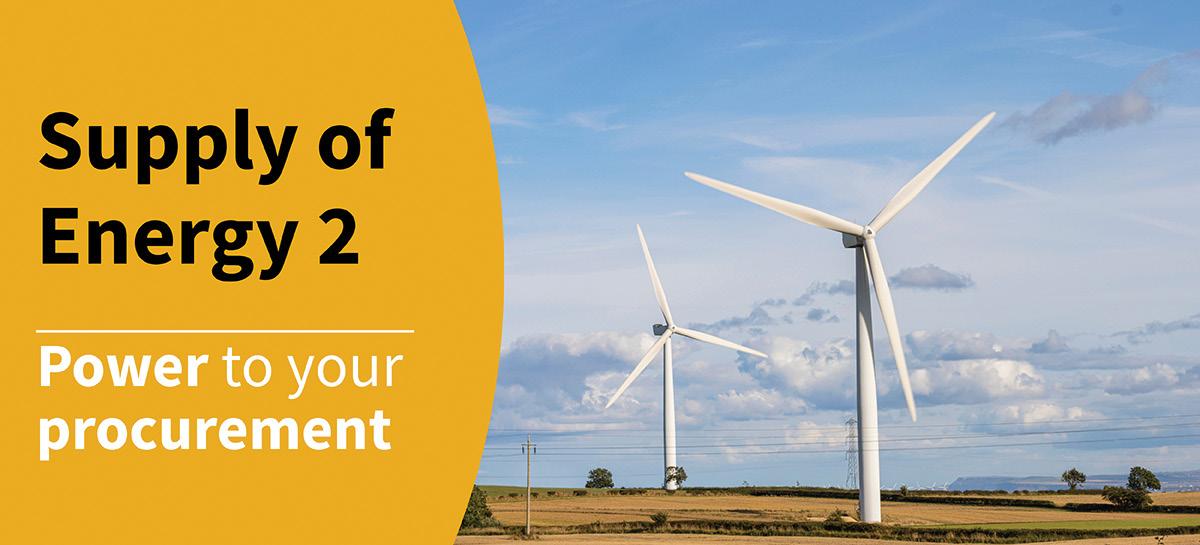
This agreement supports net zero ambitions by providing:
• enhanced provisions for sleeving PPAs
• clean zero carbon energy
• energy saving advice
• access educational energy webinars, bulletins and events carbon offsetting credits and allowances
data and portfolio management support with carbon reporting a range of other decarbonisation services
The new agreement also integrates Power Purchase Agreements (PPAs), which allow customers to purchase a proportion of their electricity requirements directly from a renewable electricity generator, such as a wind turbine or solar farm.
“Contracts that support PPAs can be notoriously complex. Our new energy supply agreement simplifies the process with a number of provisions that allow customers to integrate their PPAs directly into their supply contracts,” says John.
Customers will start to be supplied through this new agreement from April 2024, with different groups of customers being transitioned across from the current agreement in stages from April 2024 to April 2026.
To learn more about the new agreement, please visit https://www.crowncommercial.gov.uk/ agreements/RM6251


























The transition to electric vehicles is well underway but the primary challenge faced by charging infrastructure at scale is power availability. Battery energy storage is the solution to overcoming power constraints, avoiding infrastructure upgrades and decarbonising charging.
Download our latest guide to find out how battery energy storage can support EV charging.



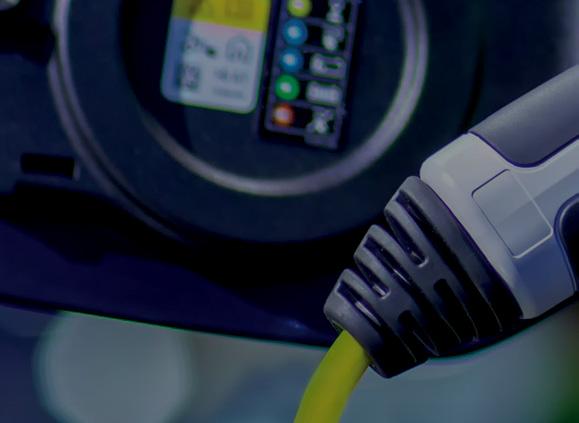




connected-energy.co.uk/EV-charging-guide

From April 2023, DNOs are being encouraged to deploy Customer Load Active System Services (CLASS), as part of RIIO-ED2. By enabling smarter balancing of voltages across the grid, CLASS is projected to cut £1 billion from customers’ bills over the coming years as well as significantly contribute to the UK’s carbon zero targets. It is also expected to deliver better quality and reliability of electricity supply to millions of users.
Ofgem’s ‘Regulatory treatment of CLASS as a balancing service’ consultation in March 2022 stated: ‘Our analysis shows that CLASS is a cost effective, low carbon technology that has the potential to reduce energy bills for consumers. (It) would have the additional benefit of rewarding consumers for sound investments made by the DNOs in the form of lower Distribution Use of System (DUoS) charges when DNOs earn profits.’ We believe that CLASS has enormous potential for countries across the world that are facing similar challenges of balancing their transmission and distribution systems.
Dramatic changes in how electricity is generated, distributed and consumed are the driving forces behind the development of CLASS. The 1950s model of centralised generation, with predictable delivery of power, is being replaced by an increasingly complex mix of de-centralised, low carbon renewable sources. Rapidly changing outputs from weather-dependent wind and solar sources necessitate increasingly rapid responses from the grid, to balance voltages, supply and demand.
Changing patterns of consumption are also having a growing impact. National Grid predicts 11 million plug-in electric vehicles by 2030. The replacement of gas heating with heat pumps will accelerate
inexorably, with upcoming changes in building regulations. Add in the growing installation of domestic solar, small scale wind generators and localised battery storage, and the balancing act becomes ever more challenging.
Yet another factor is that many parts of the distribution network are already operating with loads for which they were not originally designed. For example, end-of-network wires and cables in rural areas typically present voltage control problems, owing to growth in demand and their distance from primary substations – plus the addition of distributed renewable generation installations.
Ofgem states that CLASS can make a major contribution to its Full Chain Flexibility vision for a secure, affordable, net-zero system. It said: “The results of Cost Benefit Analysis (CBA) indicate that the economic net benefit of CLASS is expected to be strongly positive across all regulatory options and deployment scenarios. CLASS is a competitively priced technology.” Ofgem added that allowing DNOs to deploy CLASS is a departure from its policy that DNOs should not undertake activities that can be performed by third parties, as it is effectively a Distribution System Operator (DSO) role.
But it concluded: “The circumstances in this case lead us to conclude that it is in the consumer interest to take an alternative stance. Only DNOs can provide CLASS and our updated assessment suggests that the net economic benefit is likely to be significant. Prohibiting CLASS would narrow the set of choices available to the ESO and mean consumers faced higher electricity bills than they might otherwise do.”
This is a vision for a world where all connected resources can respond flexibly to available energy and network capacity – and make it easier to bring more renewable generation online, whilst keeping costs down for consumers.
The benefits of CLASS for DNOs are comprehensive, in terms of efficiency, flexibility, reductions in operating costs and the need for network reinforcement – all of which translate into lower customer bills and better service.
As the name Customer Load Active System Services implies, CLASS is a methodology for actively controlling voltages, to balance loads on the grid. The hardware comprises voltage control units, linked to control rooms dashboards, where software is to used to adjust voltages as required.

Voltages can be increased or reduced to maintain permissible levels, by amounts that are imperceptible to consumers. One of the advantages of this is that customers’ electrical and electronic equipment will run at the voltage for which it was designed, which saves energy, reduces carbon and extends service life. It also means DNOs are delivering voltages at levels which are consistently within regulatory limits.
So how did CLASS come into being?
CLASS originated in 2015 as an Electricity North West Limited (ENWL) innovation project, funded through Ofgem’s Low Carbon Network Fund (LCNF). It demonstrated that by remotely managing transformers and circuit breakers at primary substations to change voltage, DNOs could reduce or increase power demand and absorb reactive power.
Electricity North West installed voltage control relays in its grid substations, linked to its Control Centre. An advanced network management system enabled the network to respond, in real-time, to requests from National Grid.
Before the full rollout, the company successfully ran trials on 60 primary substations – around 17% of its network and 485,000 customers. Data on voltage and power quality was collected and analysed, to quantify the effects of the trial on the regional and national electricity networks, as well as customer electricity supplies.
Since 2016 under RIIO-ED1, Electricity North West has been allowed to use CLASS to sell balancing services to the National Grid Electricity System Operator (ESO), through remote voltage management at substations. We believe the decision on CLASS in RIIO-ED2, running for five years from April 2023, will actively encourage DNOs to deploy it more widely, in competition with several other flexibility services that will be needed to meet the full scope of the ESO’s future balancing service requirements. One of the additional attractions of CLASS is that provides a new model for DNOs/DSOs to generate revenue by expanding their services to the TSO.

Electricity North West’s Engineering and Technical Director Steve Cox summed up the company’s development and implementation of CLASS as: “A great example of technology that delivers real value to customers, DNOs and National Grid” – enabling it to upgrade and modernise its entire voltage control system, increase the operational integrity of its tapchanger control scheme, and future-proof it to embrace further evolution of the network.
The roll out of CLASS demonstrated there was no need to replace
transformers unless they were end-of-life, as only the voltage control parts of the system needed upgrading. CLASS could be implemented using Electricity North West’s existing SCADA substation RTUs (remote terminal units), enabling it to initiate a range of automatic actions to help balance the network, including: disconnecting one of a pair of primary substation transformers, tapping transformer tapchangers to reduce/increase demand, and • introducing tap stagger as a means of providing absorbing Volt-Amps Reactive (VAR) power.
Electricity North West’s experience has shown that CLASS can influence system loads and voltages across a wide area, enabling it to respond to rapidly changing network conditions and support the system in response to signals from National Grid. Immediate load, voltage and VAR responses are provided from the network to support the needs of the Transmission System Operator (TSO). The installation proved that a complete, cost-efficient, future proof and active voltage management solution across its whole network could be achieved with minimal impact on existing operations.
With CLASS rolled out across the network, DNOs are equipped to handle the increasingly complex voltage implications of distributed renewable generation: from facilitating their
connection to the grid without disruption, to providing immediate responses to fast-changing levels of intermittent supply. CLASS similarly makes it easier for operators to manage spikes and dips in consumer demand, while minimising the need to call upon short term operating reserves (STORs), which in some forms are carbon-intensive.
The key challenge facing the electricity industry is how to adapt a transmission and distribution grid designed in a bygone era, for a future with very different demands upon it – and do so without the crippling expense of reinforcing or replacing large parts of it. How do we take the infrastructure in which we have already invested billions, and make it fit to deliver electricity that is available, reliable, sustainable and secure – all while keeping costs low for customers who are already struggling to pay their bills?
CLASS is not the only answer. But enabling network operators to balance supply and demand, by smarter management of voltages, is a technological leap forward that has the power to benefit everyone.
https://fundamentals.tech/


The renewable energy sector is booming, and the demand for trained personnel is on the rise. As more and more countries commit to reducing their carbon emissions, the renewable energy industry is set to play a pivotal role in meeting this challenge. This has led to a surge in job opportunities in the sector, and there is an urgent need for skilled personnel to meet the demands of this rapidly expanding industry.
The REI’s accredited Master in Renewable Energy Award has been designed to educate individuals with an in-depth overview of the sector as a whole and to expand their knowledge in specific technologies which are of most interest to them and their career development.

With access to 15 renewable energy and energy efficiency courses, participants can study a wide range of technologies to kick start a new career path or advance in their current role.
As part of the Master Award, participants can choose to study in our upcoming Hydrogen Energy, Renewable Energy Management & Finance and Wave & Hydro Power Live Virtual Classrooms.
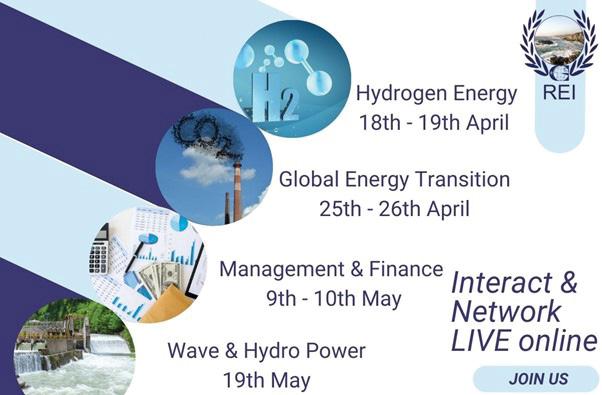
The REI is launching a NEW course in April which will focus on the Global Energy Transition including the challenges and complexities involved in transitioning from fossil fuels to renewable energy sources.
Be one of the first to gain an updated and comprehensive understanding of the current state of energy production, consumption, and the impact of the energy sector on the environment.
For more information or to secure your place now, please contact the REI on +44 131 446 9479 or email us at training@renewableinstitute.org


Bridge the energy gap between today and tomorrow. Increase energy e iciency and reduce your costs.



Measure and monitor power usage. Identify ine iciencies and out of hours use. Discover power factor, phase balance and harmonic issues.



Over the last year, every business in the UK has seen a dramatic increase in its energy bills. In many cases, these have more than doubled, with a typical small business, at the time of writing, paying at least £0.40 per kWh for electricity. Small wonder that business owners and managers are scouring their premises for equipment that they can unplug or switch off in order to make savings. There’s no doubt that this is a useful exercise, and that it can deliver valuable cost savings but, to obtain the best results, it needs to be carried out carefully and with a little thought.
An essential point to bear in mind is that there are large differences in the amount of energy consumed by the various appliances and gadgets that are found in business premises. A fan heater or electric radiator, for example, might well consume 300 times as much energy as a desk light, so remembering to turn off your desk light before going home, while laudable in itself, is unlikely to produce savings anywhere near those that could be achieved by turning off the heater in a meeting room promptly when the meeting has finished.

The table below provides an idea of how much energy is used by items found in many offices and business premises. Note that the figures in the table are intended as a guide only and there are large variations between brands and models of equipment.
A few explanations are necessary. Looking at the table, the friend of all
employees – the electric kettle, seems to be one of the greediest appliances for energy usage. So it is, but only for the time it’s in use, which is probably just a few minutes out of every hour in even the thirstiest of offices. On the other hand, an electric radiator, which is just as greedy as the kettle, may well be in use continuously for hours on end.
In other words, when assessing where energy can be saved, it’s necessary not only to look at the rating of the

item, but also when and for how long it is used, and to bear in mind that some appliances like storage-type water heaters are constantly switching themselves on and off when they are not in use. This means that they only consume energy intermittently.

An interesting point that can be seen from the table is how much more efficient LED lighting is than other types. Until recently, fluorescent tubes were widely used and were considered to be one of the more efficient types of lighting, but now a 6-foot tube consuming 70 W can be replaced by a plug-in LED equivalent which consumes only around 25 W, reducing running costs from £0.28 per ten hours to £0.10 per ten hours. That may not sound like a big saving but for a business that has dozens or even hundreds of fluorescent tubes in use for eight or more hours per day, the figures quickly mount up, so the moral is clear: bin those oldfashioned fluorescents. (Actually, don’t literally bin them – they contain mercury so must be disposed of properly.)

While the table provides some guidance on which appliances use the
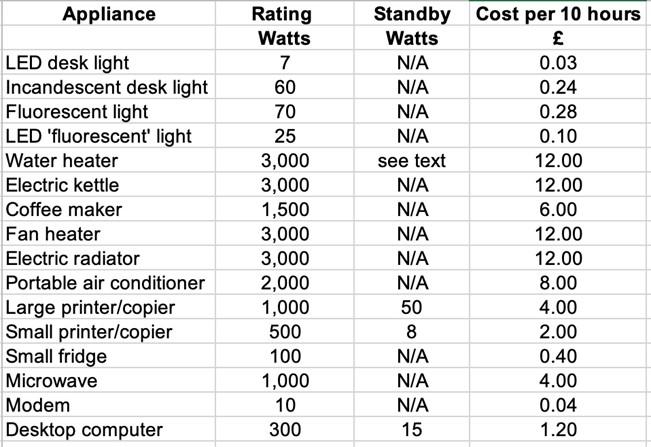
most energy and are, therefore, the most useful to target in an energy-saving campaign, it has to be admitted that it is only the most approximate of guides. A more accurate assessment can be made by inspecting the rating plates fixed to appliances, which should state the rating in watts, or, if all else fails, consulting the appliance handbook or data sheet. These can usually be found online if the physical copy has been mislaid.
A useful benefit of looking at the handbook or data sheet is that it will (usually!) give details, where appropriate, of the power the device uses when in standby mode. Despite febrile warnings in the press about ‘vampire devices’ that suck energy day and night for no useful purpose, modern devices usually have very low standby requirements so switching them off or unplugging every day may actually be more trouble than the savings that result are worth. This is especially true in the case of some printers that use expensive ink to flush the printheads every time they are switched off and on. Nevertheless, it is always worth checking!
Even with the manufacturers’ data to hand, it can be difficult to decide the

true running costs for some types of appliances, such as fridges where the motor runs only intermittently. To provide a truly definitive answer to the question of where all your energy is going the best solution is, therefore, to measure it. This is not as difficult or expensive as it may seem if an instrument like the new Chauvin Arnoux compact PEL51 power and energy logger is used.
This can be quickly installed in a distribution panel, often without needing to turn off the supply, and will monitor energy usage – along with many other power parameters – continuously and log the results. By inspecting the results, it is possible to see exactly where energy is being used and, just as important, when it is being used. Almost unbelievably, a recent survey by British Gas revealed that no less than 46% of energy used by the 6,000 SMEs monitored was used outside of business hours, so this really is a situation where knowing exactly what’s happening can save a lot of money.
Armed with the information provided by a PEL, it is easy to see where the biggest and most effective energy savings can be made, but that’s not the end of the story. When energy saving measures have been put in place,
repeating the measurements with the PEL will confirm their effectiveness and, of course, when any changes are made to the electrical installation, the PEL will allow the effect of these changes on energy usage to be accurately assessed.

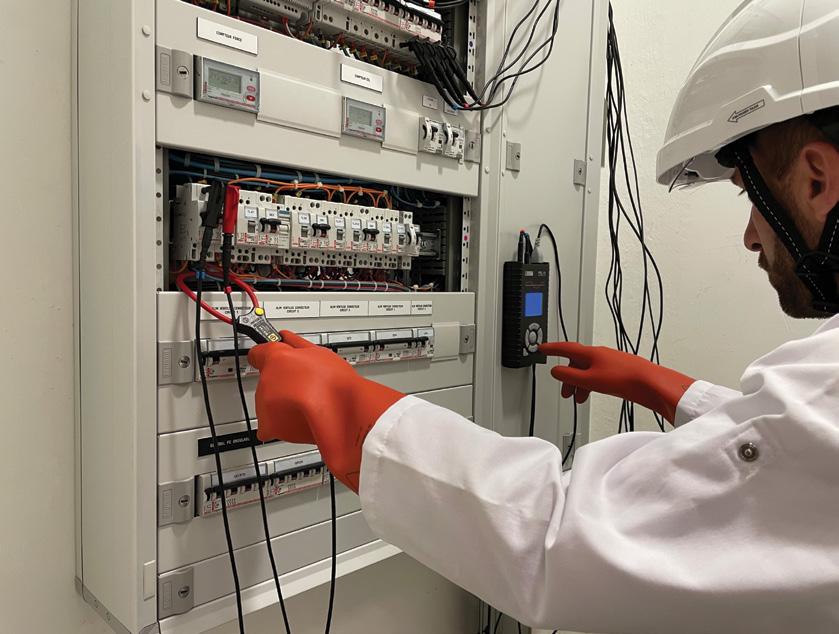

Given the current high price of energy, and that this price shows absolutely no sign of falling anytime soon, it literally pays to know where all the energy is being used in your business. As we’ve seen, a basic knowledge of which appliances use the most energy, guided perhaps by our table, is a great starting point, while checking rating plates and handbooks will provide an even better guide. The best solution, as always, is to measure what you want to control, and the easiest way of doing this is to get your hands on a Chauvin Arnoux PEL. Contact us for more details – you’ll be surprised how much you can save!
www.chauvin-arnoux.co.uk
Chris Davis, Head of Marketing at Hysopt, explains how digital technology and the new Government Heat Network Efficiency Scheme can help organisations across the public sector decarbonise heat networks and mitigate rising energy costs.

Across the UK, the local authorities, NHS Trusts, universities and colleges are committing to ambitious carbon reduction targets, with decarbonisation of heat identified by many as a key challenge for the sector.
For many, heating and cooling represents more than 70% of annual energy consumption and 4050% of energy costs and CO2 emissions.
However since the global energy cost spike in 2021, organisations are expecting their energy expenditure to double when they exit their current forward purchase agreements.

Public sector organizations must significantly reduce gas consumption and invest in low-carbon heat sources like heat pumps to meet their net-zero commitments.
However, the Public Building Energy Efficiency Report examined over 450,000 public buildings in England and Wales and found that the decarbonization pace needs to accelerate significantly. At the current rate, the decarbonisation targets won’t be achieved until 2138! Despite progress, transitioning to low-carbon heat is challenging for public organizations that rely on natural gas as
the primary heat source. This challenge is particularly evident in scenarios where large gas boilers and combined heat and power systems serve multiple buildings through heat networks, such as on university campuses or large hospital sites.
Furthermore, handling high-carbon assets like CHP and determining the efficiency of heat pumps in heating older buildings remains a concern for many organizations
Heat networks – which supply heat from a central source to heat multiple buildings connected by insulated underground pipework – form a key part of the UK’s transition to net zero emissions as they enable connection to larger-scale, renewable and recovered heat sources.


However recent research conducted by BEIS indicates that many existing heat networks operate inefficiently, leading to higher than expected energy costs, unnecessarily high carbon emissions, and generally poor thermal comfort levels in buildings.
Meanwhile, studies by Hysopt of over 400 heating installations reveal that “Performance Gaps” mean energy costs are, on average, 32% higher than they otherwise need to be, and carbon emissions 40% higher. Even in new and recently upgraded systems, significant opportunities to optimise performance are being missed.
And this is only exacerbated by the recent record increase in gas prices, leading to unnecessary and avoidable extra heating costs that can run into hundreds of thousands or even millions of pounds per year.
Universities, NHS Trusts, and local authorities are increasingly using “HVAC system digital twin” technologies to optimise their campus heat networks. This approach simulates the entire installation in a virtual replica, enabling organizations to identify cost-effective solutions for eliminating performance gaps.
For example, the University of York created a digital twin of their heat network to identify excessive gas consumption and energy costs caused by heating distribution systems in connected buildings.
Simulations from the digital twin demonstrated how specific
changes to the installation could reduce gas consumption by over 10 million kWh per year, resulting in energy cost savings of £285,000 per year at 2021 price levels.
In today’s new world energy costs, the savings would be closer to £1m per year.
Furthermore, fixing fundamental performance issues allows buildings and heat networks to operate under suitable conditions for low-carbon heat generation options like heat pumps, reducing both operational and capital investment costs.
The newly established Department for Energy Security and Net Zero aims to address performance issues in existing heat networks and connected buildings through the Heat Network Efficiency Scheme.

The £32m grant program opened for applications in February 2023 and provides funding for public, private, and third sector applicants in England and Wales, including hospitals, universities, colleges, and local authorities.
The scheme offers up to £2m in revenue grants, covering 100% of the funding for optimization studies, which HNES typically funds up to £24,000 per project. HVAC system digital twin studies align well with the requirements of HNES revenue grants. An additional £30m is available as capital grants, providing 50% match funding for eligible intervention/improvement measures.
Further details can be found in the Heat Network Efficiency Scheme Guidance for Applicants.
Optimising and decarbonising heat networks is essential to meet carbon reduction targets, lower energy costs and improve thermal comfort levels in buildings. The HNES scheme provides an opportunity for public sector organisations to trial HVAC digital twins to identify inefficiencies and the most viable solutions for improving their heat network performance.
To learn more about this alternative approach to reducing heat network performance gaps watch the recent Hysopt webinar “Making Public Buildings Low Carbon Heat Ready” found here http://bit.ly/3JLhfkK

Microgrids have long been an energy solution for remote areas, where connectivity to the Grid proves impossible or prohibitively expensive. But, as the UK moves to a more distributed energy model, the shift to renewable power generation and the urgent need for reliable and affordable energy make a compelling case for microgrid investment for an ever-growing range of sectors: from manufacturing, defence and data centres to healthcare, transport, and the wider public sector.
Local, independent, and smart –these are the three key characteristics of a microgrid, and highly pertinent in this energy crisis. A localised network, whereby power is generated and distributed locally rather than across the centralised Grid, removes transmission losses and leads to lower energy usage, reduced carbon emissions and cost savings. Functioning independently from the Grid, a microgrid provides the power resilience that is vital during a blackout or disruption to Grid supply.
Smart AI energy management technology


enables seamless switching between local and centralised supply, meaning that facilities are protected against power disruption and can manage their energy in real-time, with all relevant data available to ensure optimum efficiency.
Combining on-site generation with Battery Energy Storage (BESS) and intelligent energy management software can mean a complex project and each microgrid will be bespoke, given different customer priorities and scenarios. However, Powerstar are seeing an increasing number of clients look to this technology to help them address business-critical issues and negotiate the competing agendas of the Energy Trilemma.
Security: Battery Energy Storage (BESS) technology sits at the heart of a microgrid and, as a more efficient option than a traditional Uninterruptible Power Supply (UPS), it can provide site-wide instantaneous power in the event of any disruption to Grid supply. Where a microgrid includes renewable assets, usually solar PV or wind turbines, having multiple sources of energy available in addition to the Grid supply
allows for greater flexibility, further enhancing power resilience. Crucially, a well-designed microgrid can operate completely independently of the Grid, in island mode. Once in island mode, the microgrid can support operations indefinitely, utilising the power generated on-site and stored in the BESS. Where even the slightest disruption to energy supply can have devastating effects on a business – through downtime, wastage and scrappage, loss of data or damage to sensitive equipment – a microgrid with BESS offers significant protection and can mean an affordable payback period.
Affordability: The combined assets of BESS, on-site power generation and intelligent energy management software offer major improvements in energy efficiency, with the associated cost savings. Depending on power requirements, a site may be able to generate all the power it needs from solar or wind. But, since most sites will still require Grid power, the control system can automate the energy management process in real-time, ensuring that the site is always using the cheapest energy source available. The BESS provides the
As the energy crisis continues, the Energy Trilemma - secure, affordable, and sustainable powermeans organisations are increasingly turning to microgrids to solve their energy issues.
Solon Mardapittas, CEO at Powerstar, looks at the technology, how it helps in the current crisis and why forwardthinking businesses are futureproofing their energy infrastructure.
flexibility to store energy generated onsite for use when needed, and to draw down Grid energy when at its cheapest for use at peak times. Localised energy reduces transmission losses by anywhere between 8 and 15%, while grid service contracts offer an increasingly important new revenue stream, whereby excess energy generated on-site or drawn from the Grid can be stored in the BESS and supplied to the Grid when required.
Sustainability: Improved energy efficiency, with intelligent energy management control, offers sitewide asset management enabling the best use of energy sources, whether generated on-site or drawn from the Grid. While affordability and power resilience are critical issues, the challenge of achieving Net Zero is equally vital for businesses and organisations across the UK. Here, Electric Vehicle (EV) charging and the issue of Scope 2 emissions are significantly assisted by smart microgrid technology.
The growth of the EV market and increasing demand for rapid charging infrastructure present major issues for UK business. The significant increase in power demand required risks exceeding agreed supply capacity. The cost of a new grid connection is prohibitively expensive for many companies and even if granted is likely to have a long lead time for implementation. But it may even be a non-starter. If a local Distribution Network Operator deems that such a request could put too much strain on the network, it may well turn
down the application rather than risk localised disruption due to overloaded infrastructure. The independence of a microgrid allows for on-site EV charging, through on-site power generation and battery storage, circumventing the need for additional Grid power. Here, the BESS can be charged off-peak – reducing costs – while also maximising any on-site power generation and then used to buffer rapid EV charging when needed, avoiding any extra demand on the Grid.
Looking to Net Zero targets, Scope 2 emissions – those associated with energy generation and purchase – make up a third of total global greenhouse gas emissions. A microgrid, facilitating the most effective use of clean and green energy, helps eliminate a significant proportion of carbon emissions. Even where the reliance on Grid supply might make up the bulk of a company’s energy demand, BESS technology can help mitigate the worst aspects of carbon usage. The carbon intensity of Grid power changes depending on the time of day, the level of demand and – where renewables make up an increasing part of the energy mix – weather conditions. As a general rule, though, electricity is less carbon-intensive during the night. Installing a BESS as part of a microgrid,
enables low carbon energy to be purchased and stored overnight, then discharged during the day, cutting carbon emissions while also reducing costs.

The energy crisis is likely to be with us for at least a year, with some predicting that next winter will be more severe than the last and with little in the way of clear, on-going government support for business. Even as this crisis eases, though, the Energy Trilemma is a long-term issue. Providing greater power resilience and more affordable energy, a microgrid helps companies achieve Net Zero targets, lowering emissions and enabling more flexible use of renewables to support initiatives such as EV charging. With unprecedented pressures on energy managers, microgrid technology offers a clear solution to both short- and long-term issues.
To find out more about Powerstar’s smart microgrid technology, contact: www.powerstar.com Tel: 0333 230 1327 Email: info@powerstar.com
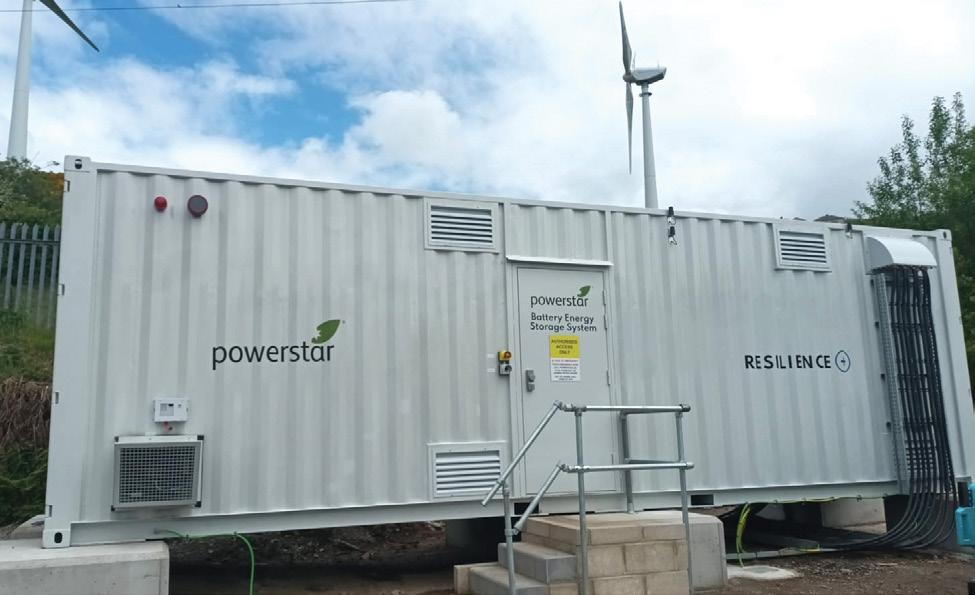


The key reason to invest in a microgrid and battery energy storage is the high level of independent reliability. By keeping the entire energy system local with surplus energy stored, there is less opportunity for power disruption, losses in the transmission system or indeed a total loss of power.
Incorporating battery energy storage and solar PV (for instance) into a microgrid system allows access to clean, low cost renewable energy – and contributes to reaching net zero.
programme, is also scalable, allowing for more batteries to be added should demand for power increase as the community thrives. Adding more batteries will simply expand the amount of power available at any given time and the repairable nature of the battery bank reduces long term costs and waste.
Interest in microgrids and their uses has steadily risen across the globe – now even more so, thanks to fluctuating energy supply and prices as well as concern over climate change. Microgrids are small scale power systems that can work with the grid or independently (when connected to an alternative energy source such as solar, wind or small hydro). They can be small, powering a single building or much larger (also known as minigrids), meeting the power requirements of entire neighbourhoods or larger commercial buildings such as office blocks, educational campuses, factories and hospitals.
A microgrid needs to include; power generation, storage, distribution and intelligent software to safely guarantee a steady supply of power throughout the day or night. If it is not using the grid for power, it also needs to be able to provide the same critical functions such as restarting itself, the capacity to allow a large draw of power in one surge as well as voltage and frequency regulation so investing in a microgrid is no small undertaking.
When working independently of the grid, battery storage is the cleaner, more efficient and future-proof option, although some microgrids still use diesel powered generators.
As well as improving the reliability of a local energy supply, embedding microgrids into the energy infrastructure also contributes to a wider energy resilience by reducing congestion on the grid and reducing draw down during peak hours.
As the large-scale mass production of microgrid equipment develops, the initial cost outlay should reduce, making microgrid systems a more viable option in future.
We have been working in partnership with Vittoria Technology and Energicity on a scalable microgrid whose purpose is to consistently and reliably deliver power to Kukuna Health Centre in a remote part of Sierra Leone.
In this setting, the uniquely repairable, serviceable and upgradeable battery bank works with solar PV to harness the abundantly available solar energy to power the health centre no matter the time of day or night. This means that the 15,000 patients the clinic serves can be treated safely and consistently; giving birth at night, protecting the vaccine cold chain and enabling medical staff to treat emergency patients 24 hours a day.
The project, which was funded by Innovate UK’s Energy Catalyst
The global microgrid market is projected to grow from $8.74bn in 2022 to $23.9bn by 2029 and, as more renewable technologies are integrated, they offer a more controllable, reliable, sustainable and flexible energy supply in a localised setting.
As with all new technology, it is imperative that we design and build products that will have a long and useful life expectancy in order to reduce waste and preserve the Earth’s finite resources. The best way to do this is by embedding the principles of a circular economy into the products used in a microgrid system. Taking batteries as an example, most battery assembly methods involve bonding the cells and other parts using spot welding and strong adhesives. When one part of this type of battery fails, the entire unit goes to waste. However, it is often the case that up to 80% of their cells would still be reusable, but because they are permanently bonded, the useful cells that still have charge, become useless also.

The technology to prevent us from treating batteries as disposable products is there, it just needs to be more widely adopted and, as technology advances, each element of a microgrid should be upgradeable rather than replaceable. Older parts can be repurposed to ensure we get maximum use out of the many materials used in a microgrid before having to recycle or dispose of them.
www.aceleronenergy.com/ www.fortunebusinessinsights.com/ industry-reports/microgridmarket-100406

S t a r t y o u r n e t z e r o j o u r n e y o n J u n e 2 0 t h

L e a d i n g b u s i n e s s v o i c e s I n n o v a t i o n i n a c t i o n

N e t w o r k i n g a n d a d v i c e
3 0 + c o n t e n t s e s s i o n s
5 0 + e x h i b i t o r s O n l y 1 5 0 0 f r e e t i c k e t s


R E G I S T E R N O W
C o v e n t r y B u i l d i n g S o c i e t y A r e n a
f u t u r e N e t Z e r o - f o r m o r e i n f o r m a t i o n v i s i t u s a t b i g z e r o s h o w c o m o r f u t u r e n e t z e r o c o m E m a i l u s a t b i g z e r o s h o w @ f u t u r e n e t z e r o . c o m




 Matthew Lumsden, CEO, Connected Energy
Matthew Lumsden, CEO, Connected Energy

The energy landscape is changing fast. More than ever, organisations around the country face a pressing need for larger and more consistent and cleaner supplies of energy. Confronted by a combination of ageing, limited infrastructure and higher peak loads, a proactive response to on-site power management will be key to avoiding productivity bottlenecks and unnecessary costs.
Fleet electrification is a uniquely challenging wave within these changing tides. Powering this crucial
operational activity must now be ongrid, rapid, and flexible to the needs of dynamic and varied assets.
Accommodating these new and exciting demands through renewable energy is the gold standard, and one which Connected Energy has unlocked with its innovative battery energy storage system (BESS) technology.
Providing unprecedented flexibility, resilience and cost efficiency through smart storage for renewables, it’s leading the charge in green business growth.
A high energy, low carbon economy is rapidly moving out of the distant horizon and into an immediate reality. From 2018 to 2050 Britain’s power requirements are predicated to double, in parallel with the achievement of net zero power generation across the nation.
These monumental changes are being built today. Electric vehicle (EV) adoption is a major growth area within this low-carbon paradigm shift, and a significant contributor to the increasing appetite for on-grid power. Ofgem predicts that 14 million EVs will be on the roads of Britain by 2030, up from 395,000 today, and that 100TWh of electricity will be needed to power them by 2050.
For your business, that means working out how to supply higher numbers of fast, rapid or ultra-rapid chargers – drawing up to 100kW each – on your sites and ensuring that load is balanced well enough to keep all your vehicles on the road, achieving their objectives.
Without an energy storage system, obtaining the necessary capacity usually requires an expensive, time-consuming DNO infrastructure upgrade. This will be unviable for many smaller businesses and can be difficult to justify for incremental expansions to EV charging infrastructure – not to mention the significant risk it poses to project timelines and budgets.
Connected Energy and its battery storage system offers an elegant solution to these obstacles, providing a low cost, highly adaptable route to effective on-site grid management.
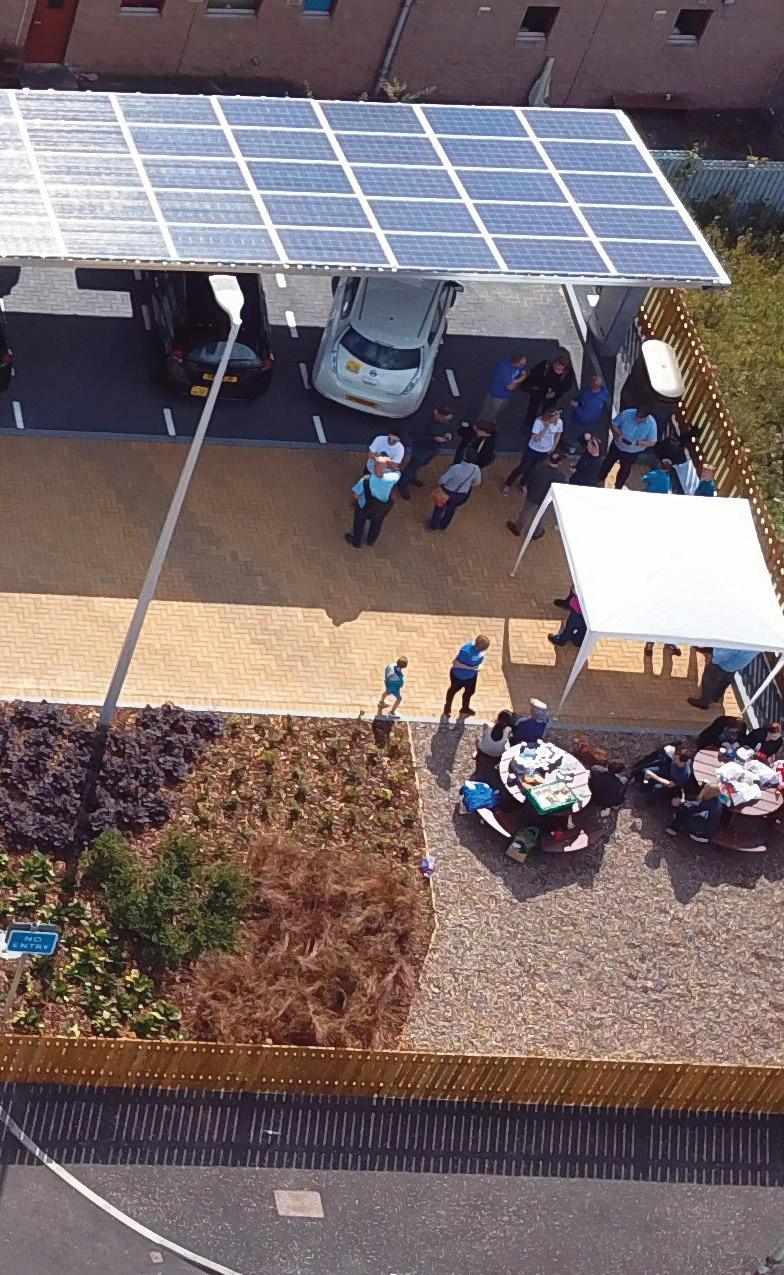
During this green energy boom, managing excess generation is as important as dealing with rising consumption. From as early as 2025, it’s predicted that 100% of British energy requirements could periodically be met through renewable generation. In fact, UK government is already paying hundreds of millions a year in constraint costs as green energy production outstrips the capacity of the current network.
Sites with their own renewable generation face similar stumbling blocks without an energy storage solution. Locally produced solar or wind surplus must be discharged during periods of low demand, either as waste or illtimed exports to the grid, rather than powering EVs and business productivity.
With high power requirements and with volatile energy tariffs, expanding EV fleets suddenly run the risk of creating higher carbon footprints and operational costs – the opposite of what they could, and should, deliver.
Organisations can’t always control when their fleet needs to recharge. But, with an intelligent storage system for renewables – whether produced on-site or drawn from a green tariff – managers can ensure that drivers are ‘filling the tank’ with cheap, environmentally friendly energy round the clock.
Connected Energy is working with organisations across the public and private spheres to equip them for a future defined by large-scale EV charging. Its E-STOR battery storage system transforms a oneway relationship with the grid into an effective energy ecosystem.

Integrated with other local assets, it intelligently draws and stores power at low-load, low-cost times, ready to deal with demand spikes and offering a higher overall site capacity. It also unlocks the full potential of renewable energy by allowing businesses to store surplus power produced on-site, realising the true value of their green assets and reducing dependency on mixed energy tariffs. Not only that, but as an AI-powered smart system the BESS can track loads across a site, providing extra power as needed to guard against slow charging, load shedding or outages.
Fundamentally, BESS technology gives energy managers the freedom and power to manage their energy strategy as they see fit. Whether it’s responding to changing rates in the energy market, accommodating new assets like EV charging points and on-site solar, or ensuring that every driver that pulls in can get the charge they need, the E-STOR system makes it consistently and reliably possible. Not only that, but by redeploying second life car batteries to enhance their EV charging capabilities, business managers can create a truly circular EV energy economy.
Connected Energy recognises the potential for supercharging EV fleets by linking them to efficient, flexible supplies of renewable energy. By placing a BESS at the heart of the on-site energy ecosystem, managers can achieve significant carbon reductions, realise cost efficiencies, and power green business growth.
Energy managers can also download a new white paper from Connected Energy, which explores how battery energy storage can meet the demands of EV charging and support sustainable business: www.connected-energy.co.uk/ EV-charging-guide
With the EU and UK committed to net-zero carbon emissions by 2050, increasing our use of renewable energy has never been more important. In the UK in 2022, we produced c40% of our electricity from fossil fuels. We need to reduce this dramatically if we are going to mitigate climate change, meet global targets to reduce emissions, and ensure the future security of energy supply.
The wind turbines and solar panels we see as we travel around the world are testament to the growing importance of wind and solar power. However, there’s another part of the renewable energy infrastructure that is less high profile, but equally important – energy storage. With the supply of wind and solar at the mercy of the weather, we need a system for balancing the flow of renewable energy at scale.
Large-scale battery energy storage schemes enable surplus wind and solar energy to flow into lithium-ion batteries, where it can be stored until needed. In the UK, National Grid states that to achieve sustainability targets we need 10 times the amount of battery energy storage currently on the network. Clearly, this is both a huge challenge and an opportunity.
Harmony Energy is one of the UK’s leading developers, owners and operators of utility-scale battery energy storage. So, what does it take to develop and finance a battery energy storage scheme? And what are the potential benefits for all involved?
Last month saw a major milestone for Harmony Energy and our investment company Harmony Energy Income Trust Plc (HEIT) – the official opening of our Pillswood battery energy storage system near Hull. This is Europe’s largest battery energy storage system by capacity, capable

of providing electricity to power c300,000 homes for two hours.
All battery energy storage projects depend on grid connections. The Pillswood site is ideally located next to the huge Creyke Beck electricity substation, north of Hull. The world’s largest offshore wind farm, Dogger Bank, feeds into the same substation. An agricultural field next to the substation was the perfect spot for a development and, Northern Powergrid confirmed there was sufficient capacity and reinforcement on the network for batteries with a grid connection of 98MW.
We designed the layout of the batteries within the space and submitted a planning application to the local council. The site is in a flood sacrifice zone – used as a floodplain to prevent people’s houses flooding – so our design incorporated an elevated platform to raise the batteries from ground level. We also proposed landscaping to create biodiversity gains, including trees and over 1km of hedge planting on the site and along the access track. At the same time, we negotiated land rights with the four landowners who owned the field and land needed for the access route.
Work began in autumn 2021 with the construction of a 1.5km access track, complete with two bridges and culverts. We then began to prepare the battery site itself, with the installation of 478 piles, each to a depth of around 13m. Ground beams were inserted to connect the piles, before our specialist construction team began building up the legs of the platforms for the batteries to sit.
Constructing to a tight timescale in a challenging geopolitical and global supply chain environment was no mean feat. To reduce the risk of delays on components, we spoke directly with factories and spent days negotiating logistics. Fortunately, there was no delay to the vital delivery of

the two-hour Tesla Megapack batteries from Nevada – and the transformers only had to travel from Leeds.
After an intensive period of testing and control procedures, the Pillswood scheme was fully energised a month ahead of schedule – in time to support National Grid in providing stable, secure power to the network over the winter period.
Back in November 2021, Harmony Energy successfully floated its investment arm, Harmony Energy Income Trust Plc (HEIT), on the London Stock Exchange, raising £210m. HEIT has preferential rights to acquire and build out the next 1GW of Harmony Energy’s development pipeline – providing investors with an opportunity to participate in the construction and growth of battery energy storage and renewable energy.
HEIT stepped in with investment for Pillswood at the construction-ready stage –once planning, grid connection, construction and battery supply contracts and the lease option over the land had been secured. As a result, investors were protected against development risks inherent in a project like this, while benefitting from value uplift as the project went from construction to operation. One of the most remarkable aspects of battery energy storage schemes like Pillswood is that they are constructed without depending on government subsidy.
Pillswood is the first of six similar schemes scheduled for delivery by HEIT in the coming year. Looking to the future, we need to work together globally to support developments like these if we want to enable clean energy generation and protect the future of our planet. www.harmonyenergy.co.uk
In 2022, an estimated 13.4% – or 3.26 million – households in England were in fuel poverty. For 2023, the projection sees this rise to 14.4%, or 3.53 million households1
Unfortunately, tackling the UK’s fuel poverty problem is no mean feat. Policies, prices, and political agendas can change rapidly. The most certain and sustainable way of easing fuel poverty, then, is to directly improve home energy efficiency.
And one enormous opportunity to do so lies in energy storage technology.
If you haven’t heard much from the government regarding energy storage technology as a means to combat fuel poverty, it’s because the two points have not yet been adequately connected.
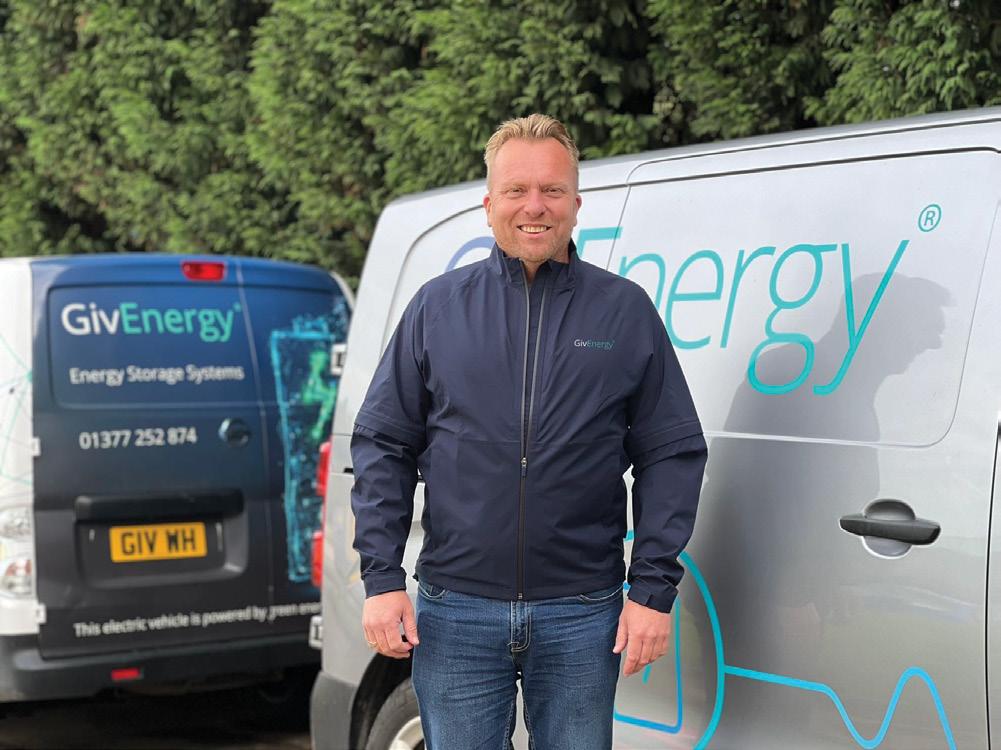
The UK government is taking valid steps to improve home energy efficiency. However, these steps could go further. For example, the Future Homes Standard will futureproof new dwellings with energy-efficient heating systems, while also improving thermal efficiency and air tightness levels. Though a welcome initiative, energy storage is conspicuously absent from this directive.
Or, consider the British Energy Security Strategy. The strategy furthers support for new nuclear, offshore wind and heat pumps. Once more, however, the deliverance of a complementary energy storage strategy has been overlooked.2
Or take the data from Cornwall Insight, which indicates that the government must invest £20bn in battery storage by 2030 to meet its renewables goals.3 That’s nearly a fifth of the government’s total investment in energy technologies.
Energy storage, then, has not yet been implemented at the government level. Sadly, this comes at the detriment of home energy efficiency – and in turn, at the detriment of UK fuel poverty.
1 https://assets.publishing.service.gov.uk/ government/uploads/system/uploads/attachment_ data/file/1139133/annual-fuel-poverty-statisticslilee-report-2023-2022-data.pdf
2 https://www.energy-storage.news/uk-governmenturged-to-develop-energy-storage-strategy-thisyear/
3 https://www.current-news.co.uk/government-mustinvest-20bn-in-battery-storage-by-2030-to-meetrenewables-goals/
 Jason Howlett, GivEnergy CEO
Jason Howlett, GivEnergy CEO
The failure to put energy storage at the heart of government initiatives further obscures awareness of an overlooked – and often little-understood – technology. As a case in point, we can look at the use of home solar contrasted to the use of home batteries.
As you might expect, UK bill-payers are looking to alleviate their energy concerns. Many are now turning to familiar technologies such as solar panels. Indeed, data from eBay found that searches for solar panels were up 45% in 20224 Meanwhile, roughly 1.2 million homes in the UK already have solar panel installations.5
However, in 2019, just 10,000 homes in the UK were using battery storage.6 Though demand for battery storage has escalated in the last few years, a sizeable gap between the number of homes with solar PV and the number of homes with storage batteries remains.
One of the reasons for this gap is a simple lack of awareness of the benefits of storage batteries when paired with solar. Battery storage is a fairly new technology. No government initiatives currently incentivise its adoption. But to end UK fuel poverty, that needs to change.
Using a renewable power source is a positive step towards saving money on energy bills. But without the capacity to store up energy, it remains a relatively small step.
Hundreds of thousands of homes across the UK are generating free solar
4 https://www.cityam.com/households-turns-to-solarpanels-and-smart-meters-to-tackle-rising-energybills/
5 https://www.theecoexperts.co.uk/solar-panels/ popularity-of-solar-power
6 https://whitespacestrategy.com/wp-content/ uploads/2020/02/Domestic-Energy-StorageInsights-Implications.pdf
power with no means to store it. Occupants can’t save any excess energy for later use. So, though they may be generating green energy during the day when the sun is shining, they’re still drawing expensive energy from the grid in the evenings.
Only with battery storage can occupants stop drawing from the grid during peak times, and thereby reduce their energy bills more meaningfully.
Lack of awareness on energy storage also contributes to the misconception that storage batteries require solar panels in the first instance. A storage battery will still work effectively without solar – simply by drawing cheap energy from the grid overnight and discharging it during peak times. Indeed, bill-payers can save £1500 per year on their energy bills with a storage battery alone. (According to real-world data from our energy monitoring software.)
The efficiency of standalone storage batteries throws open the potential for every bill-payer to ease their fuel poverty. Flat owners can use compact batteries that will fit under a counter. Renters don’t need to fork out for solar installations. The classic three-bed semi-detached can run itself on cheap off-peak power.
Simply, in a world where policies may come and go, and prices may fluctuate – a storage battery will allow homes to run on clean, cost-effective battery power come what may.
www.givenergy.co.uk

There has never been a better time to invest in solar energy. As more organisations race to meet their net zero targets in the most efficient and cost-effective way, all eyes are on solar – and for good reason. As recently as the end of March, the UK government pledged to establish a taskforce and roadmap to drive the further growth of solar energy, and with the ongoing volatility of global energy markets and cost becoming a huge driver due to the impact of the war in Ukraine, more companies are looking to move away from gas. For many businesses, solar is becoming the go-to solution.
Controlling your energy also means having more control over your costs, providing more security and stability for your business. While investing in renewable energy solutions comes with upfront costs, the returns can be significantly higher – and quicker – with solar. Not only is the average solar installation paying for itself in just 4-5 years, but companies could also be halving the cost of their energy by generating it through solar panels compared to energy from the grid. And, with solar solutions having benefitted from technical improvements and economies of scale over recent years, initial upfront costs have also come down and are now less of a barrier for businesses.
What’s more, lingering concerns around solar investments not producing the required supply are no longer accurate – in fact, solar PV is one of the most advanced renewable energy technologies for built environments. The International Renewable Energy Agency (IRENA) reports that the costs of solar PV have fallen by 82% over the last decade, while cell efficiency has also dramatically improved.
The versatility of solar energy is a real advantage. While some organisations use solar PVs to heat and power buildings, others can charge their EV fleets, which are growing in size ahead of the upcoming ban on the sale of new petrol and diesel vehicles from 2030. With the energy markets’ increasing volatility, solar energy can enable an
Matthew Brailsford, Managing Director and Founder of Custom Solar, a Mitie company.estate to become self-sufficient and eliminate reliance on third party sources and the uncertainty that comes with it. Mitigating risks, hitting decarbonisation targets, and adding value to a brand, all go hand in hand and can all be improved by transitioning to solar power. Beyond the obvious environmental benefit of transitioning across to solar, and the benefits of taking positive action now to achieve net zero goals on time, it is just as important to recognise the consequences of inaction. These days, on-site solar generation is a cost-effective, future-proof solution with secure prices and secure supply. But as the demand for green energy increases, organisations should not wait for costs to rise and as businesses compete for more grid supply. Inaction can also lead to long-term challenges, which could have otherwise been avoided. With government intervention and a recent push on green initiatives, leaving decarbonisation projects to a later date might incur legislative noncompliance, reputational damage, and huge capital investments down the line. Businesses that are keen to invest in on-site solar should do it fast.
From getting planning permission or grid connections in place, through to installation and maintenance, there are several key stages to ensuring a successful journey to solar. Rather than jumping in headfirst, it’s important to
analyse current energy consumption, starting with an initial survey to understand current energy consumption and where the opportunities are for solar installations. From there, solar specialists can prepare a custom design, taking into consideration commercials, space and sizing, to ensure both building owners and occupiers get the most out of the installation. Once the installation is complete, monitoring and reporting systems are put in place to ensure maximum value from the panels. With ongoing monitoring of the solar installation, which can be done remotely with the installation of sensors, maintenance teams can make sure the system is always performing at peak efficiency and anticipate any performance issues before they arise.
More solar panels are being installed on UK rooftops than ever before, making it an exciting time for the industry, as one of the fastest growing sectors in the country. This popularity will only continue to benefit businesses too, as more investment will lead to further technological and financial improvements. This only highlights the strong appetite for these solutions – both from organisations and the Government – and the growing confidence in solar, which is hugely exciting for all involved. We’ve already seen so much progress in recent years, and this is only the beginning. www.customsolar.co.uk



The goal set by the Paris Agreement is to keep the average global temperature rise to 1.5°C over the long term. This goal is consistent with efforts to reduce global carbon dioxide (CO2) emissions to net zero by 2050. Worldwide action now requires nothing less than a radical change in the way we generate, move, and use energy.
The NHS remains a national treasure since 1948, providing healthcare to millions of people every year. There are ongoing efforts to adapt to new technologies, such as wind power and commercial heat pumps. And with these efforts comes many challenges ahead for the NHS.
One of these challenges is sustainability: how can we make sure that our hospitals and trusts have enough sustainable greener power and heat, even where resources are limited?
The NHS can save £250 million by 2050.
Healthcare facilities will achieve this savings amount by using less energy, water, and materials while producing less waste and less carbon throughout all their buildings across the UK.
The NHS is an expansive organisation, with over 2000 hospitals across England alone and spends about £500 million on electricity each year. According to estimates from BRE, the NHS uses energy that contributes to about 4 million tonnes of CO2 nationwide in the UK, or about 22% of the NHS’ overall carbon impact.
Heat pumps can save costs and reduce energy consumption by transferring heat from a cooler source into a warmer one (such as air). The
result is that less energy is needed to maintain a comfortable and consistent temperature in the building. This brings benefits for both staff working there and patients being treated within it.
Since CO2 heat pumps are air source heat pumps, they are simpler to install, more affordable, and capable of producing high temperatures with high efficiency.
Heat pumps, when connected to a low-carbon, off-grid or net metering tariff, can be three times as efficient as boilers and produce zero carbon emissions. More NHS facilities can use commercial heat pumps alongside solar panels and wind turbines to provide clean energy to NHS premises.
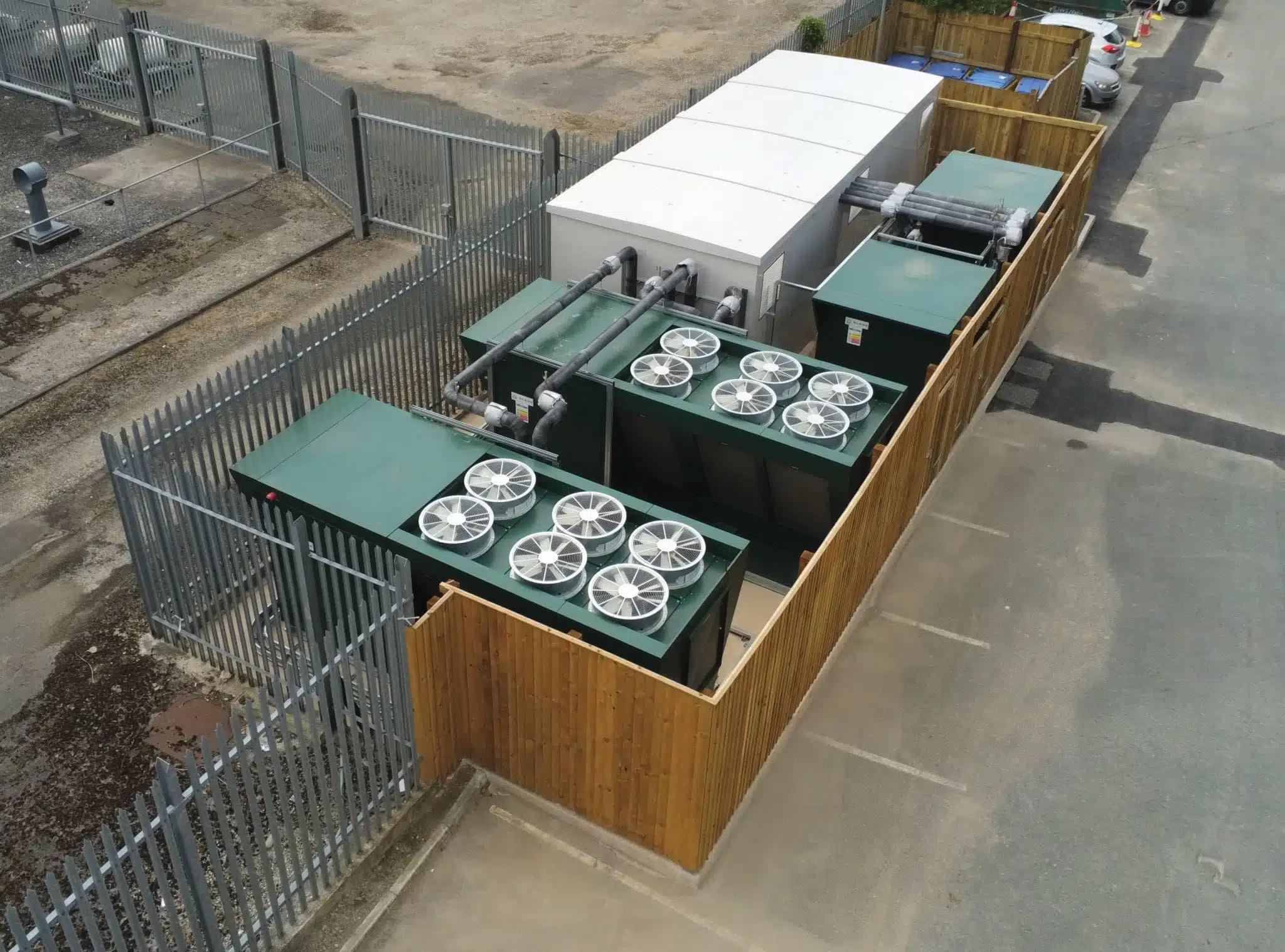
NHS Hospitals will benefit in multiple ways from installing a heat pump in their premises, and will contribute to:
• Reduced Energy Bills
• Improved Local Air Quality

Tim Rook – Chartered Engineer at Clade Engineering, says: “The NHS uses enormous quantities of heat and hot water to provide safe and effective healthcare for patients, contributing to around 22% of our UK carbon footprint. Currently this is generated by the combustion of fossil fuels, a high cost and high carbon activity. Heat pumps are the only scalable, available and viable low carbon heat generation technology. CO2 heat pumps can generate very high temperatures suitable for hospitals where cleanliness and hygiene are of vital importance, and are low carbon and sustainable. We would use our Oak range of heat pumps which are high spec for Hospitals. They have high quality components designed for long life and efficient performance as well as full data access to our digital services.”
An engineer determining the appropriate heat pump for a hospital would first conduct a feasibility study, which includes assessing factors such as space, noise, power supply, and suitability. This study would progress to the design and installation stages, with correct commissioning and servicing being crucial to ensuring the system’s long-term success. During the first year of operation, the heat pump is optimised to perform in all conditions, with engineering support being essential.
Typically, heat pumps are installed in car parks or open spaces around the hospital building or on the roof, where they require adequate air flow to function properly. The hot water generated is then piped into the existing boiler location and distributed from there. The heating system may require some modifications to enhance efficiency, and a power supply is also required, which can be obtained from the nearest supply or sub-supply location.

The climate crisis poses a threat not only to the environment but also to human health. Protecting the ecosystem is, therefore, linked to good health.
Scotland’s NHS target is net zero by 2045. Wales’ NHS has agreed to a 34% cut by 2030 to achieve a larger objective of a net zero public sector by that year. In Northern Ireland, a target date and expected reduction is yet to be known as of the date of this article.
Between 1990 and 2020, the health and social care system in England cut its carbon footprint by 62%. Between 2010 and 2017, it decreased its water footprint by 21%.
Across the NHS, there are many notable achievements towards the reduction of carbon emissions.
Trusts are actively trying to improve the energy efficiency of their structures. The Central London Community Healthcare (CLCH) NHS Trust uses renewable energy to power its structures. Over the next three years, it plans to add solar panels and heat pumps to three of them.
A Greener NHS is the national initiative of the NHS with the goal of combating climate change. Its priority is establishing the NHS as the first Net Zero carbon neutral health service in the world. There are many chances for advancement as the largest employer in the nation and the source of 4% of England’s total carbon emissions.
Across NHS estates and facilities, more green plans are progressing the organisation’s strategy to hit energy reduction targets. This means an ongoing commitment to supporting programmes that reduce carbon emissions. More advanced management systems and energy-efficient appliances could cut energy use by about 40%. Switching gas boilers over to electric heat pumps increases productivity and utilises a lower-carbon energy source.
• Waste reduction initiatives, such as limiting the use of singleuse consumables, and water efficiency projects, decreasing emissions from solid refuse, and reduction in wastewater.
• MDI and anaesthetic gas emission reduction to reduce health care emissions from high-carbon medicines. Reducing overall demand for products and services to cut back on supply chain emissions (drug wastage or refurbishing devices) i.e. going green by making the switch from disposables to reusables.
• Using technologies to reduce the use of plastic in medicines.

• A change to low-carbon products and services by distribution of plant-based meals, and low-carbon data services.
• For transportation: The NHS cycle to work scheme, the gradual introduction of electric ambulances, and other NHS vehicles. By lowering local air pollution, reducing auto accidents, and boosting physical exercise, these interventions will also improve health. This can extend to delivering care to patients closer to home rather than sending them away for treatment, e.g. virtual appointments and home visits.
While quite ambitious targets for Net Zero by 2050, all plans are realistic journeys. With prompt action and consistent evaluations and monitoring, the NHS can be the world’s first Net Zero health organisation. The two top targets on emissions for the NHS:
• A target to get to an 80% reduction in emissions by 2028 to 2032 for emissions directly from the NHS.
• A target of an 80% reduction in emissions that the NHS influences by 2026 to 2039.
The right questions are being asked now, not later. What energy sources are more efficient than boilers? How can we save money on fuel costs? How can we reduce plastic, waste and air pollution? The NHS will continue to reduce costs and make our hospitals more ecofriendly, and Commercial Heat Pumps are one of the significant factors in reducing our carbon footprint through renewable energy. We have a long way to go, so we should all be playing our part in creating a more sustainable future, starting with our NHS. https://clade-es.com/
The past few months have put energy supply and consumption in the spotlight – both for consumers and businesses. And while the energy prices continues to impact people across the world, policy makers are implementing solutions to help address the challenge. For example, the new Demand Flexibility Scheme, introduced by the National Grid, gives energy suppliers the chance to pay their customers a small bonus if they use less electricity than usual at certain times of the day.
The industry’s focus on encouraging new consumer habits when it comes to energy consumption will help reduce the need for additional peaking power generation while also cutting CO2 emissions – a key priority for the government in its plan to become a net zero country by 2050. But tackling the problem requires close collaboration between the industry and consumers – and the right technology to support the transition to cleaner energy sources and more efficient consumption.

Although it is clear there are financial benefits for consumers who partake in the Demand Flexibility Scheme, energy suppliers are still on the fence. Some of them want to fully assess the benefits of the scheme for their business before embracing it. Meanwhile, others are already taking full advantage of it to make themselves indispensable to their customers. This can be seen with companies such as Ovo, which is helping customers reduce bills and reduce demand on the grid.
By having a closer relationship with their customers, suppliers can build trust at a time when businesses and consumers are looking for suppliers to help them shoulder the cost-of-living crisis they are going through. In addition, this approach enables energy suppliers to open a dialogue to identify the specific needs of the people they serve and how they can offer new products and services to their customers that support a lower carbon mode of operating the power system.
The closer the collaboration between
suppliers and customers, the more energy suppliers can understand consumption patterns – and the better they can forecast (and manage) peaks or troughs in demand, which in turn impact the carbon intensity of generation to meet that demand.
From a supply perspective, this also enables energy companies to adjust their operations to avoid shortages, withstand periods of lower demand and be able to offer the right amount of energy during periods when their customers need it most, without firing up fossil fuel assets to cover those needs. This new way of working for suppliers will require collaborative business models with third-party organisations that offer specific services based around time of use, and all underpinned by high quality, readily available data.
Automation also plays a significant role in bridging the gap between suppliers and customers. In an increasingly competitive market that’s experiencing rapid change and economic uncertainty, suppliers are focusing on end-to-end customer process journeys to increase efficiency, improve quality,

The scheme isn’t only designed to help the industry and consumers withstand changes in energy availability. It also helps the National Grid tackle its biggest challenge: reducing the country’s energy demand.
And this objective is no mean feat. Without substantial reductions in energy consumption, meeting the government’s 2050 Net Zero goals will be both extremely expensive and complex. In November of 2022, the Finance Minister Jeremy Hunt announced he wanted to cut Britain’s energy usage by 15% by 2023 to help reduce bills, catching up with European neighbours who are already prioritising measures to counter spiralling prices. Reducing demand by this much means, in today’s prices, a £28 billion saving from the UK’s national energy bill or £450 off the average household bill yearly. The alternative to reducing consumption is to rely heavily on decarbonising the supply chain, which would require more
effective methods to capture and store clean energy. While research and commercial solutions exist to tackle this, we have yet to see those scale to support the entire energy needs of the entire country.
A report conducted by IMB last year, which surveyed 16,000 global consumers, revealed that than half (51%) of respondents believed environmental sustainability is more important to them today than it was 12 months ago. The report also found that consumers’ actions are starting to match their intent. As sustainability is being brought to the top of the corporate agenda with 90% of executives believe sustainability is important, suppliers can play on the importance of reducing energy consumption in line with sustainability targets as a way to entice both consumers and businesses into enrolling onto the Demand Flexibility Scheme.
There are a few ways that suppliers can use the Demand Flexibility Scheme to support their existing customers and attract new ones. To save customers money, suppliers need to be able to measure and share actual consumption data. To do so, energy companies need to roll out technology that helps gather accurate data in real-time, such as smart meters. Making them more affordable and accessible to consumers, and deploying engineers to install them will help drive wider adoption. Suppliers to businesses could also consider providing scalable plans to entice their customers to adopt one solution for all their needs over time. Simplifying the options to those that customers need today should go hand-in-hand with investing in Research & Development to develop innovation that will support the needs of tomorrow. This will allow energy companies to provide appropriate services to their customers over time, and remain indispensable as they continue to explore the various energy sources available to them.
The Demand Flexibility Scheme is only the first step towards improved energy management for a future where energy access is likely to become increasingly more regulated. Early adopters who combine a strong customer base with a commitment to innovation stand a better chance to lead in the future. https://expleo.com/
Energy managers are facing exploding client need for decarbonisation strategies across multi-building sites. This includes large scale residential developments, university campuses, healthcare estates and local authority areas. With the clock ticking to meet emissions targets, pressure is increasing on those in charge of these sites to have a tangible plan in place to meet net zero.
More than 90% of GDP is now covered by net zero targets and more than a third of the world’s largest publicly trading companies have them. With the vast majority of these goals aligned to science-based targets, a huge number of those with multi-building sites have pledged to half emissions by 2030 and be net zero by 2050, including over 50% of the FTSE100.
However, to meet these decarbonisation goals, businesses must have a net zero roadmap in place, and many do not have the tools or the information to create one. For example, only 17% of businesses have implemented a detailed programme for mapping emissions and fewer than half actually monitor them.
With time running out, tackling one building at a time is simply too slow. As a result, the industry is ramping up efforts in energy masterplanning and looking to distributed energy networks and microgrids in order to integrate communities of buildings and unlock local energy decarbonisation opportunities.
Network modelling tools provide opportunities for energy managers and consultants to simulate building energy demand and to assess the feasibility for energy sharing. They can benchmark the energy and resources needed for new and existing developments and assess scope for electric vehicle charging infrastructure and renewable energy generation. This might include the use of wind turbines, solar panels or energy storage.
Energy sharing and the integration
of electricity, heating, cooling and waste networks can be achieved through the creation of a network digital twin. This form of digital twin can connect to and interact with building and city level digital twins, as well as exist on its own. It enables virtual testing of energy network scenarios to identify the best performing solution. As a result, energy managers, and clients, can be assured that energy is being utilised in the most effective way, driving efficiency, reducing bills and enhancing resilience.
The impact of different scenarios, such as how district cooling would affect water use or how electrifying heat would impact the power grid, can be analysed to ensure that any decarbonisation options that are implemented don’t encounter issues later down the line.
An example of how network modelling and digital twin technology can be utilised to identify the best energy strategy can be seen through a case study of Pollok Park, Glasgow’s largest park. The estate is home to grade two listed Pollok House and The Burrell Collection.
As part of Glasgow City Council’s efforts to meet net zero carbon by 2050, they needed to mitigate emissions across the Pollok Park estate. To do so, IES created a digital twin of the estate, utilising network modelling tools to analyse energy supply and demand between different buildings, identify how resources could be exchanged between them and how renewable energy could be generated.
The digital twin is being used to inform decision-making on how to make the park energy independent by generating energy and heat locally. By virtually testing different scenarios, the Council is able to implement the best net zero approach and communicate to stakeholders where energy waste can be reduced, and efficiency improved. So far, planned improvements indicate a 34% reduction in Pollok Park’s carbon emissions and findings show that the park could reach its net zero carbon goal through a combination of battery storage, additional renewables,

heat pumps and interconnecting heat and electrical networks.

Those tasked with undertaking decarbonisation feasibility studies for clients that have multi-building sites can utilise network modelling and digital twin technology to gain a holistic view of the whole energy system. From this, they can help clients to deliver on clean energy targets, whilst building in opportunities to strengthen selfsufficiency through generation.
In the midst of the energy crisis, energy resilience is high on the agenda. From both a sustainability and security perspective, businesses are keen to explore ways that they can move towards energy independence through renewable energy sources.
Generation, integration, distribution and optimisation of energy systems will play a vital role in meeting decarbonisation goals. As the window for action narrows, those in charge of decarbonising multi-building sites must utilise the tools available to accelerate the move to net zero.
Over the last 25+ years, IES has built a solid reputation as the leading global innovator in integrated performancebased analysis for the built environment. Its digital twin technology facilitates the creation of resource-efficient, healthy and cost-effective built-environments of any size or purpose – supporting citizens, companies, campuses, communities, cities and even countries. For additional information, please visit www.iesve.com. You can also follow IES on Twitter, Facebook and LinkedIn and check out https:// www.iesve.com/discoveries for all the latest news and content.

Working with VIVO Defence Services, CU Phosco replaced eight High Mast Floodlight Systems with the FL810 LED Area Floodlight, a Dark Sky friendly solution that meets all the requirements for CAP168 compliance.

VIVO Defence Services, a company that manages the Armed Forces’ built estate, was tasked with replacing the Wattisham Flying Stations’s eight High Mast Floodlight Systems, each carrying 5no 1000W SONT floodlights. Working with the Ministry of Defence’s Defence Infrastructure Organisation (DIO), VIVO has developed a deep understanding of MOD culture, ethos, structure, and practice and employs a technology-enabled commitment to improving customer satisfaction levels, asset efficiency and user productivity.
Stuart Murray, CU Phosco, details that “technology has come a long way since we installed our FL444 SONT floodlights in 2001, so the project presented excellent potential for substantial energy savings.”
Paul Wright, VIVO Project Manager, Wattisham Flying Station, adds, “The concept was brought about by Wattisham Flying Stations DIO SEFM, Larry Allsop after a High-Level light failure. It was highlighted that VIVO should review the existing lighting system and supply a practical and cost effective solution, incorporating sustainability solutions within the design and installation with support and guidance from CU Phosco”
Using the existing 40m high masts CU Phosco worked closely with VIVO to find the optimum LED floodlight for the airfield.
CU Phosco’s in-house team completed the lighting design, and its contracting team delivered the LED replacement within a week.
Ideal for replacing existing 1kW floodlighting systems, the chosen luminaire, FL810 LED Area Floodlight, provides a highly efficient solution for the airfield.

FL810’s cooling fins are optimised with
a high surface area to quickly draw heat away from the LEDs. Vents created by the vertical cooling fins accelerate natural convection through the heatsink. The rising hot air draws cold air in from below, immediately cooling the LEDs and maximising their lifespan and light output. This cooling effect ensures FL810’s high efficacy is maintained over its life.
The low-glare, Dark Sky friendly solution meets all the requirements for CAP168 compliance and limits obtrusive light to the surrounding environment. Furthermore, its excellent CRI ensures excellent visual conditions for the helicopter pilots on the aircraft stands.
The floodlight’s superior energy efficiency has delivered 64% energy savings, helping VIVO to deliver an annual reduction of £46,000 in electricity costs for the MOD, with a payback of under 2.5 years.
Furthermore, with sustainability in mind, the luminaire is fully recyclable at the end of its life.
Paul Wright, VIVOProject Manager, Wattisham Flying Station, concludes, “The solution was beyond what Larry Allsop and I were expecting. The ease of installation and support of FACIT Testing Ltd, Norwich, for their management and submission of completion certificates was impressive for the works, as were the cost savings and I would highly recommend FACIT and CU Phosco.” www.cuphosco.com

Active Travel is about getting from A to B by walking or cycling; it’s about leaving your car at home and making short journeys either by bike or on foot. In 2020 the British Government invested £2bn in walking and cycling schemes to help level up the country and the drive towards net zero.


Active Travel is about connecting people with their communities. Newport City Council states that more active Travel means safer, healthier neighbourhoods.
Phil Slade, Newport City Council, comments, “We want people to be proud of where they are from and feel safe walking or cycling around their local neighbourhoods. Active Travel is also about looking after our environment. Every active travel journey you make will reduce our carbon footprint, which will help improve the city’s air quality and protect the environment and the planet for future generations. It also makes it easy to build exercise into your day, which will help your mental and physical health.”
Phil continues, “We want to make active travel options the first choice for Newport residents and are developing
new active travel routes and schemes across the city. We’re also working hard to upgrade our existing routes. Our route in Tredegar park – a 4 KM footpath was previously unlit, which was a barrier to people using it at dusk. Therefore, we wanted to create an environment where our residents feel safe while preserving the night sky and limiting the disruption to the nearby wildlife.”
Tredegar Park is a 90-acre public park in the western Coedkernew area of the city of Newport. Working with Centregreat infrastructure service provider, Newport City Council has installed 350 of Thorn Lighting’s Urba Bollards to illuminate the 4 KM footpath in Tredegar Park.


The International Dark-Sky Association approved bollard’s contemporary charm enchants the area by day and has a gentle impact by night. Its 3000K warm white light and zero upward light reduce the effect of skyglow on the night sky and limit
the disturbance of local wildlife. Helping to encourage Active Travel, the Urba bollards provide just the right amount of light to reassure visitors and create a feeling of safety while cycling or walking along the route.
Phil comments, “It’s a little early for data; however, feedback from the public has been very positive. We have received comments that the luminaires have made a real difference to when they can use the park and have been warmly welcomed in each location they have been installed.”
For more information on the Urba Bollard, visit the website at www.thornlighting.co.uk

A wide group of people working across all areas of the Public Sector – to educate, train, support and connect as we work towards a more sustainable future.
The principal changes for Phase 3 include:
Complying with energy and carbon regulations can seem like a burden, especially at a time when businesses face so many other challenges. But far from distracting attention from important priorities, the activities associated with compliance present a valuable opportunity for businesses to directly address some major challenges, such as achieving net zero carbon, optimising energy use and reducing costs.
Compliance with the The Energy Savings Opportunities Scheme (ESOS) in particular, offers a direct way to measure and assess energy use and carbon emissions, and can help organisations implement practical and measurable steps to reach net zero.

Introduced in 2015, ESOS is a mandatory energy assessment scheme administered by the Environment Agency. It aims to encourage greater energy efficiency. ESOS requires eligible businesses to complete energy audits and identify energy-saving opportunities every four years. We are now in the compliance period for Phase 3 of the scheme, which means businesses must submit their ESOS audits and recommendations by the deadline of 5th December 2023. Eligible businesses are those with more than 250 employees or an annual turnover exceeding £44 million. The qualification date for Phase 3 was 31st December 2022.
Some important changes have been introduced for Phase 3 of ESOS, following a consultation by the Environment Agency. These changes aim to eliminate some of the problems experienced during Phase 2, improve the quality and consistency of audits, and ensure the scheme supports the UK’s net zero ambitions.
A reduction in the percentage of total energy consumption that can be excluded from audits (referred to as the de minimis). Previously, while businesses had to report on 100% of their energy use, they only needed to audit significant energy consumption representing 90% of total consumption. That meant 10% of consumption was excluded from the audits. This de minimis percentage has now been reduced to 5% – so businesses must audit and identify energysaving measures for at least 95% of their total energy consumption.
A requirement to include an overall energy intensity metric in the ESOS report. This must be expressed in terms of kWh/m2 for buildings, kWh/ unit produced for industrial facilities and kWh/mile travelled for transport.
• A standardised template enabling businesses to consistently report summary information, such as energy consumption and route to compliance.
• A requirement for participants to set targets or action plans following the Phase 3 deadline. Businesses will be required to report against these targets in Phase 4. Annual progress reports will be required, bringing the scheme into line with Streamlined Energy and Carbon Reporting (SECR). Previously, businesses were required to identify energy-saving opportunities as part of ESOS compliance but were not legally obliged to implement them.
• A requirement to share ESOS reports with all subsidiaries.
As in Phases 1 and 2, companies must provide information about energy usage and expenditure across all buildings, industrial processes and transport, covering all electricity, gas, vehicle fuel, heat supplies and self-generated energy consumption. To comply with Phase 3, the data used as the basis for your reporting must cover at least 12 consecutive months any time between 1st January 2022 and 4th December 2023. ESOS audits must be reviewed by a board-level director and approved by an ESOS Lead Assessor.
The audits required to comply with ESOS enable you to gather vital data on energy consumption and identify ways to reduce energy use and carbon emissions. These reports and data can help you to assess your carbon footprint, implement effective net zero strategies and, over time, monitor progress towards your net zero goal.
Besides carrying out regular audits, there are other ways to achieve ESOS compliance, which provide wider benefits for your business. One of these is ISO 50001 certification. ISO 50001 is the internationally recognised standard for energy management systems (EnMS). If your business is fully certified to ISO 50001, it will automatically comply with ESOS. What’s more, ISO 50001 is a longterm cost and resource-efficient way to meet the requirements of many other regulations, such as SECR and CCA –without the need to appoint separate specialists to comply with each scheme. It provides a framework for establishing best practices in energy management and for creating a net zero roadmap.

While the Phase 3 deadline of 5th December 2023 may seem a long way off, experience from previous ESOS phases shows that it can take up to six months to plan, collect and audit all necessary data. If you haven’t already begun the compliance process, it’s important to start now.
Equans is an experienced Lead Assessor for ESOS and can fulfil all of your auditing requirements, as well as providing expertise and resources to implement any energy-saving or net zero measures. If you choose the ISO 50001 route to compliance, Equans has the expertise to guide you through the process of accreditation, from gap analysis to policy development and process change – helping you achieve long-term cost, energy and carbon savings.
To find out more about the ESOS phase 3 auditing, energy-saving and net zero carbon services offered by Equans, please contact: carboncompliance.uk@equans.com or visit equans.co.uk/energy-complianceservices
 Kas Mohammed at Schneider Electric
Kas Mohammed at Schneider Electric

Tightening of Energy Performance Certification (EPC) regulations by the UK government means that commercial building landlords are on a countdown to improve energy efficiency. The challenge is significant, considering that around a quarter (25%) of the UK’s building stock was constructed before 1900 and many of these are amongst the most inefficient.
On average, buildings waste up to 30% of the energy they consume, up to 45% of the energy used is due to heating, ventilation, and air conditioning (HVAC) and up to 40% of a building’s space is not utilised.
From April 1st this year, nondomestic buildings without an EPC rating of E or above cannot be continued to be let. These regulations are set to tighten further. By 2027 these buildings will need to achieve an EPC of C before reaching a rating of B by 2030. Landlords missing these targets may find it harder to attract tenants and could face financial penalties, as well as missing out on the average 4% increased rents associated with a step improvement in EPC.
With more than 80% of all existing buildings expected to still be in use in 2050, a swathe of the UK’s building stock must now undergo a program of sustainable refurbishment and retrofitting. Current EPC data shows that there’s still a long way to go; around 70-80% of the UK’s building stock will need to be upgraded in order to meet 2030 regulations. However, those that focus these efforts solely on achieving EPC compliance will find themselves at an acute disadvantage.
While EPCs focus on the quality of the fabric and services of a building, they do not measure operational energy use. During an energy crisis where utility prices are at an all-time high, operational efficiency is a challenge we can’t ignore. While the tightening of the regulations is a welcome move, it raises the issue of the energy performance
gap – the difference between the predicted energy performance of a building, as estimated by the EPC, and its actual energy consumption in practice. In many cases, buildings are not performing as well as their EPC ratings suggest they should, resulting in higher energy bills and carbon emissions.
These energy and carbon costs can be reduced through considering a design-for-performance approach. Commercial landlords are increasingly moving away from the ‘design for compliance’ approach, which has historically been the norm, toward a performance-based rating system. This is what NABERS UK certification now creates; a requirement to measure the energy use of their estates, bringing energy monitoring technology to the forefront to ensure compliance with the latest sustainability standards.
In refurbishing and retrofitting existing buildings, landlords and owners must consider moving away from EPCs as a baseline signal of success towards ongoing, performancebased measures, such as NABERS. But how can this be achieved?
Retrofitting buildings to achieve maximum energy efficiency, beyond mere compliance, is not as complex as it may first appear, especially when working alongside dedicated, experienced solutions partners.
Today we already have the technology and services available to simplify these efforts, while increasing energy savings and lowering operating expenses. Digitisation and electrification are redefining how building owners can operate and maintain their buildings. Retrofitted buildings need solid technology foundations that enable data collection and visualisation to drive informed decisions to improve energy efficiency performance.
Digitising decarbonisation efforts in this way help streamline the management of aged facilities and mitigate non-
compliance of inefficient assets and systems while providing the capabilities to reduce OpEx through cost-cutting solutions and the ability to minimise unplanned maintenance on ageing equipment. This is all before helping mitigate the challenges surrounding the industry’s skills gap.
To support our customers with the retrofitting challenge, we have developed a 3-phase retrofit roadmap that ensures a holistic approach to strategise, digitise and decarbonise estates. This all-encompassing approach ensures building sustainability delivers across the board - from emissions to OpEx and user satisfaction.
The first step in the Stategise phase is to conduct an energy audit to understand current usage and levels of optimisation. Consultancy services can then help to identify the most costeffective retrofit measures that can be taken to reduce energy consumption and improve overall operational efficiency.
These measures could involve digitising through the integration of smart devices, software, analytics and services, all of which can be implemented with minimal disruption. The manipulation and validation of connected data enables the potential for decarbonisation.
To secure sustainable buildings of the future, owners and operators of buildings must embrace change - and fast. The sooner commercial owners embrace digital efficiency, the quicker they will see the businesschanging benefits and impact that today’s connected technologies can offer. https://www.se.com/




